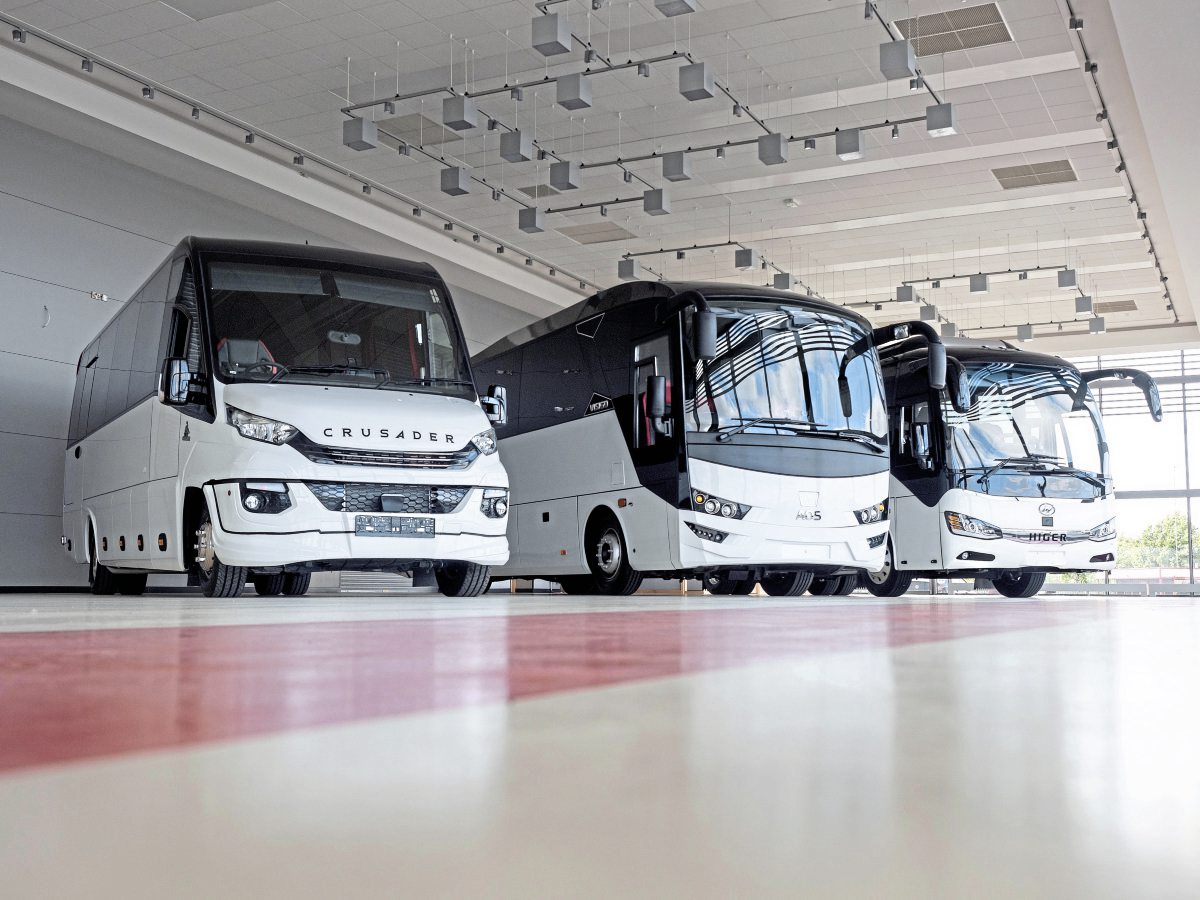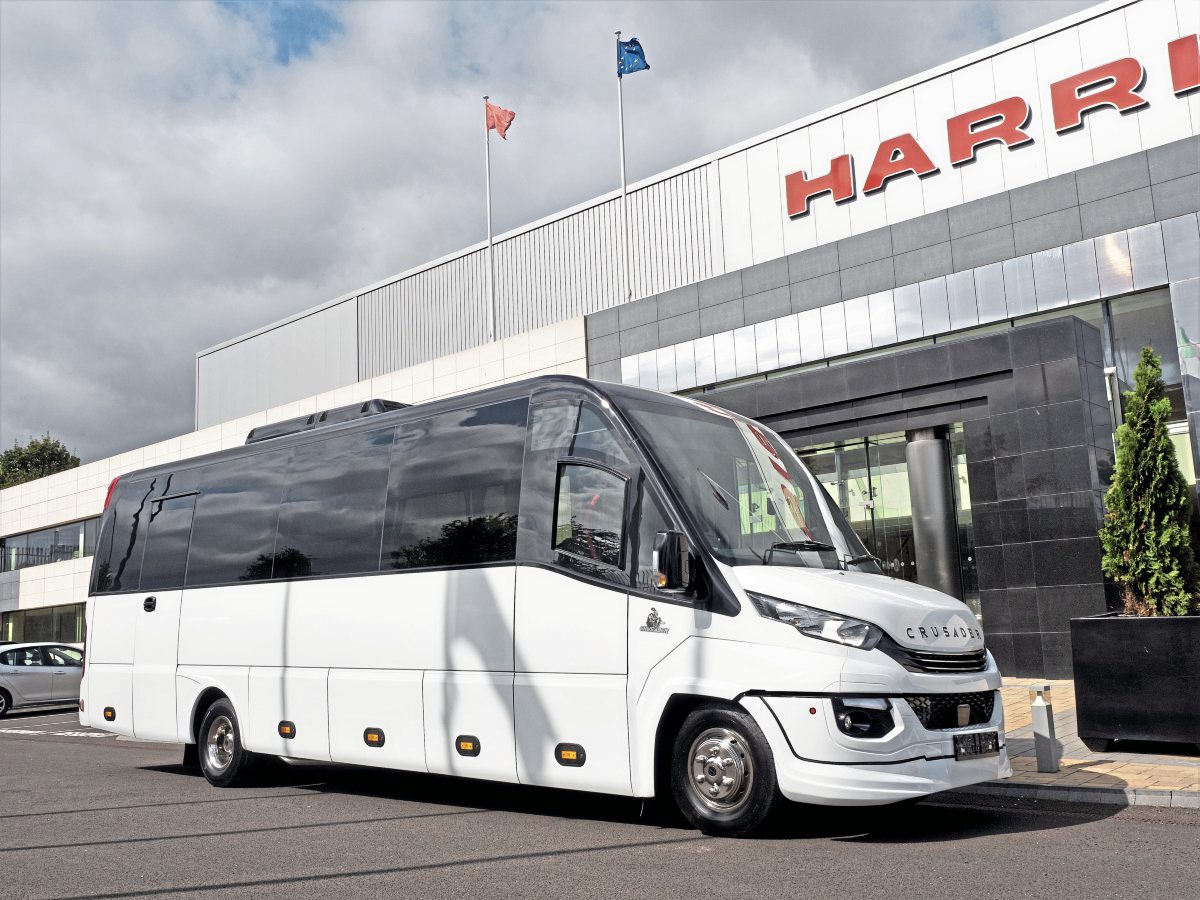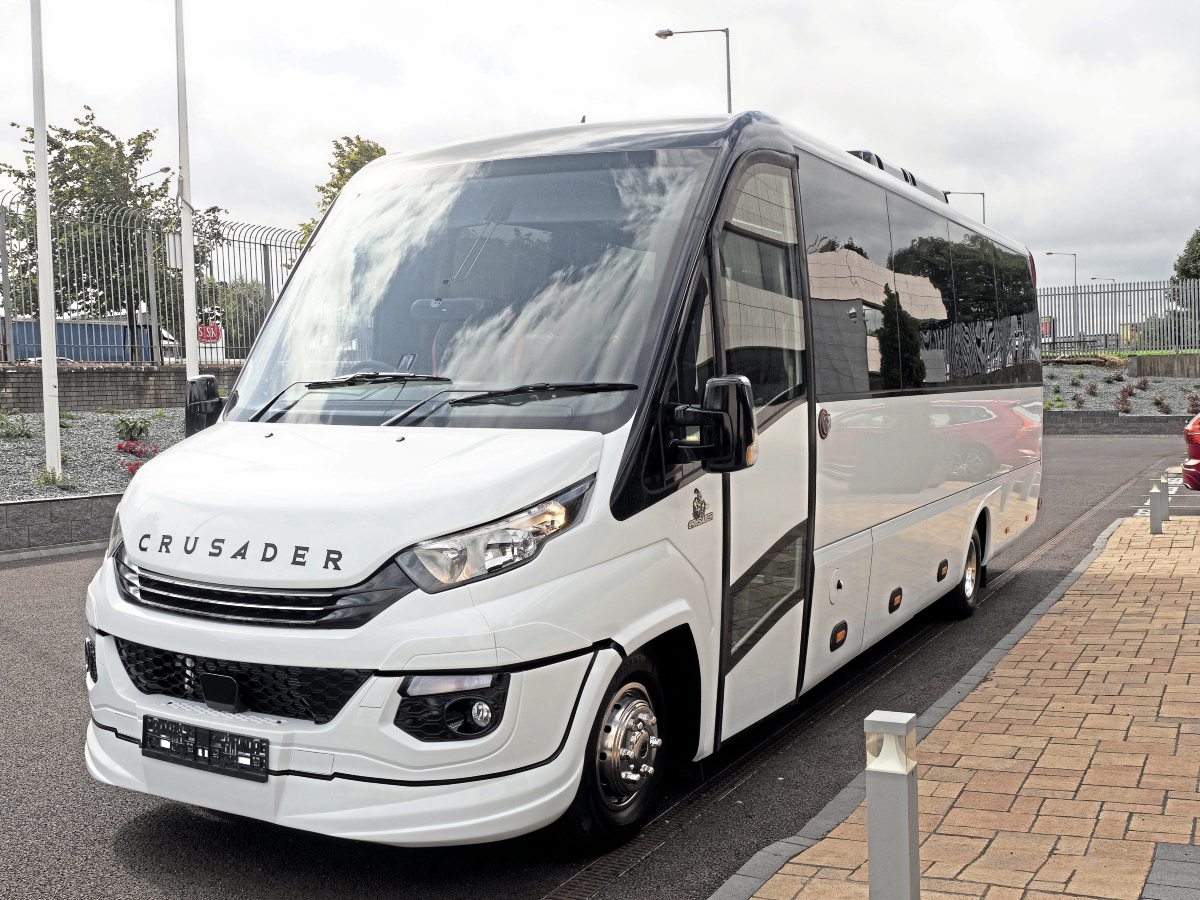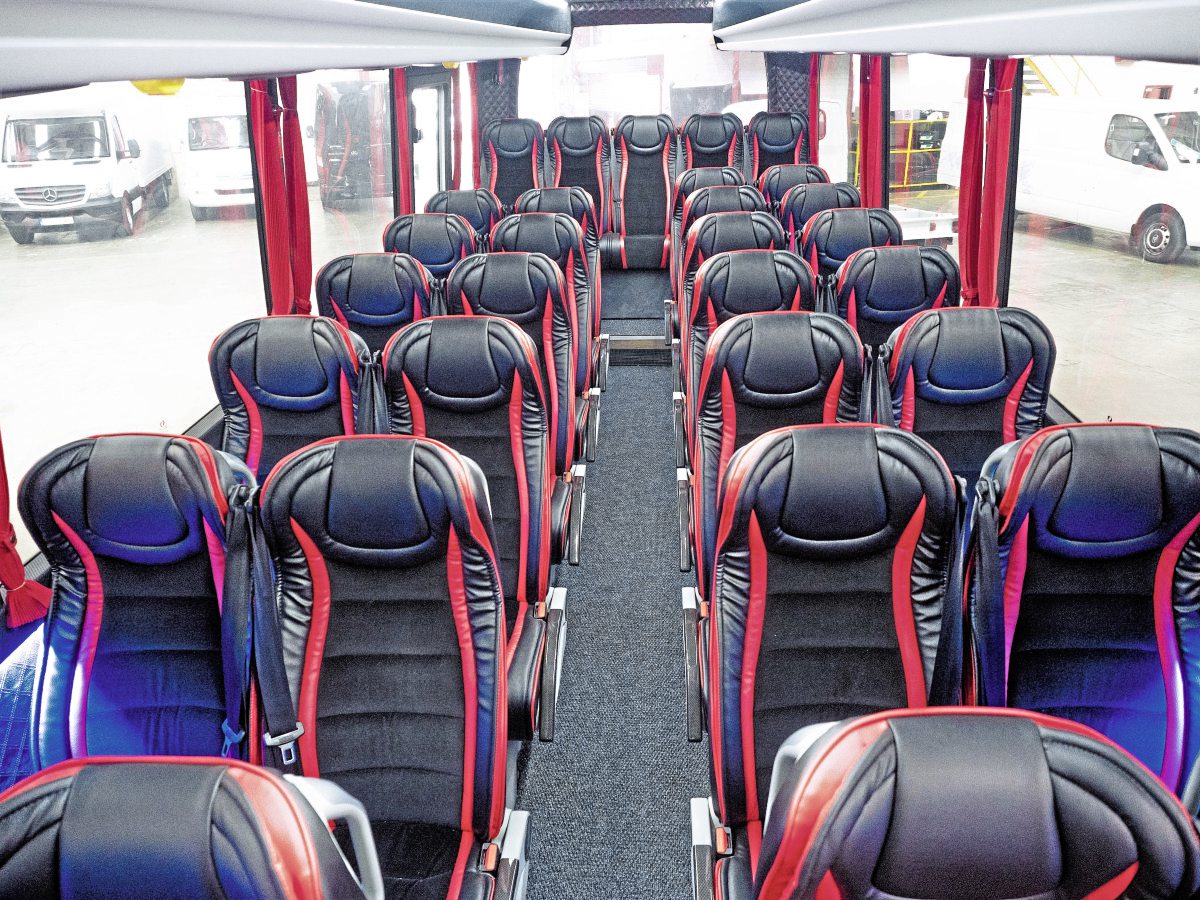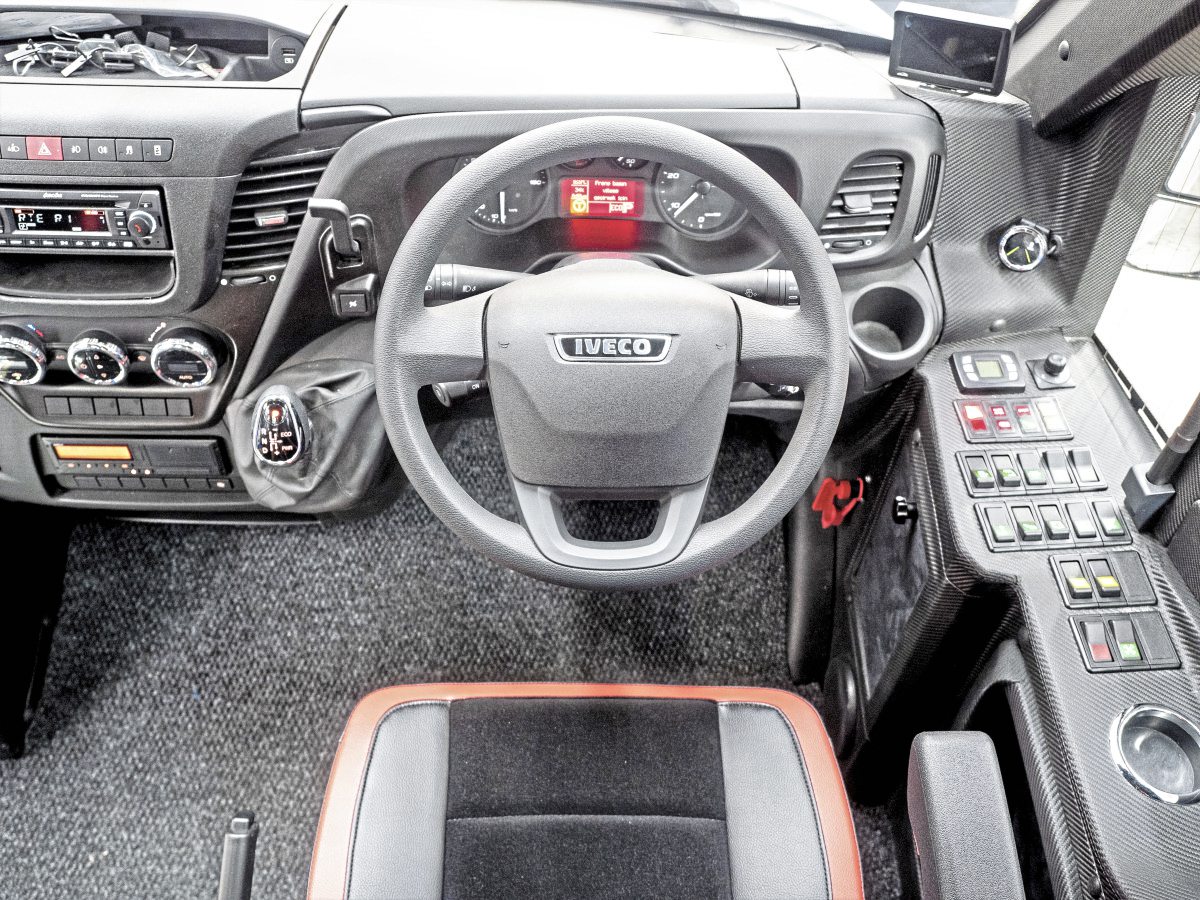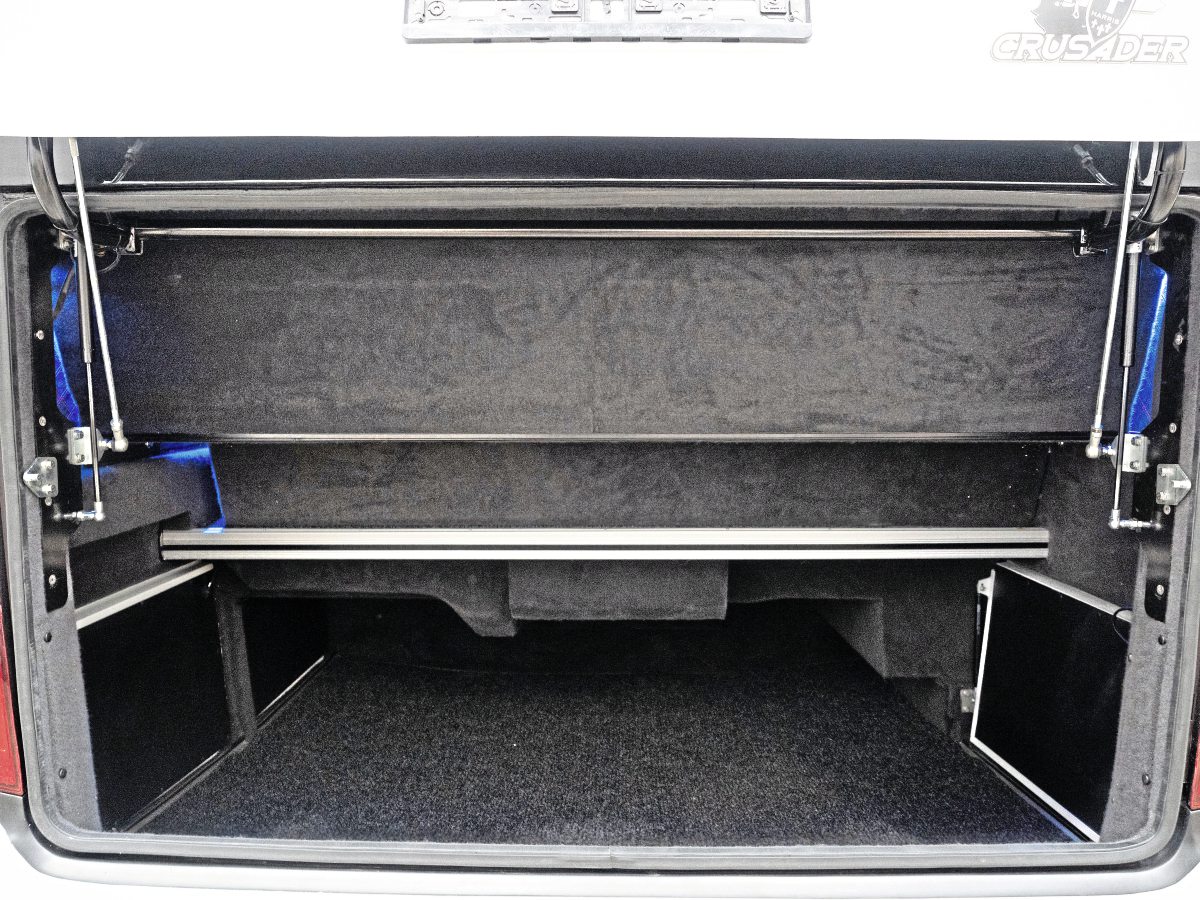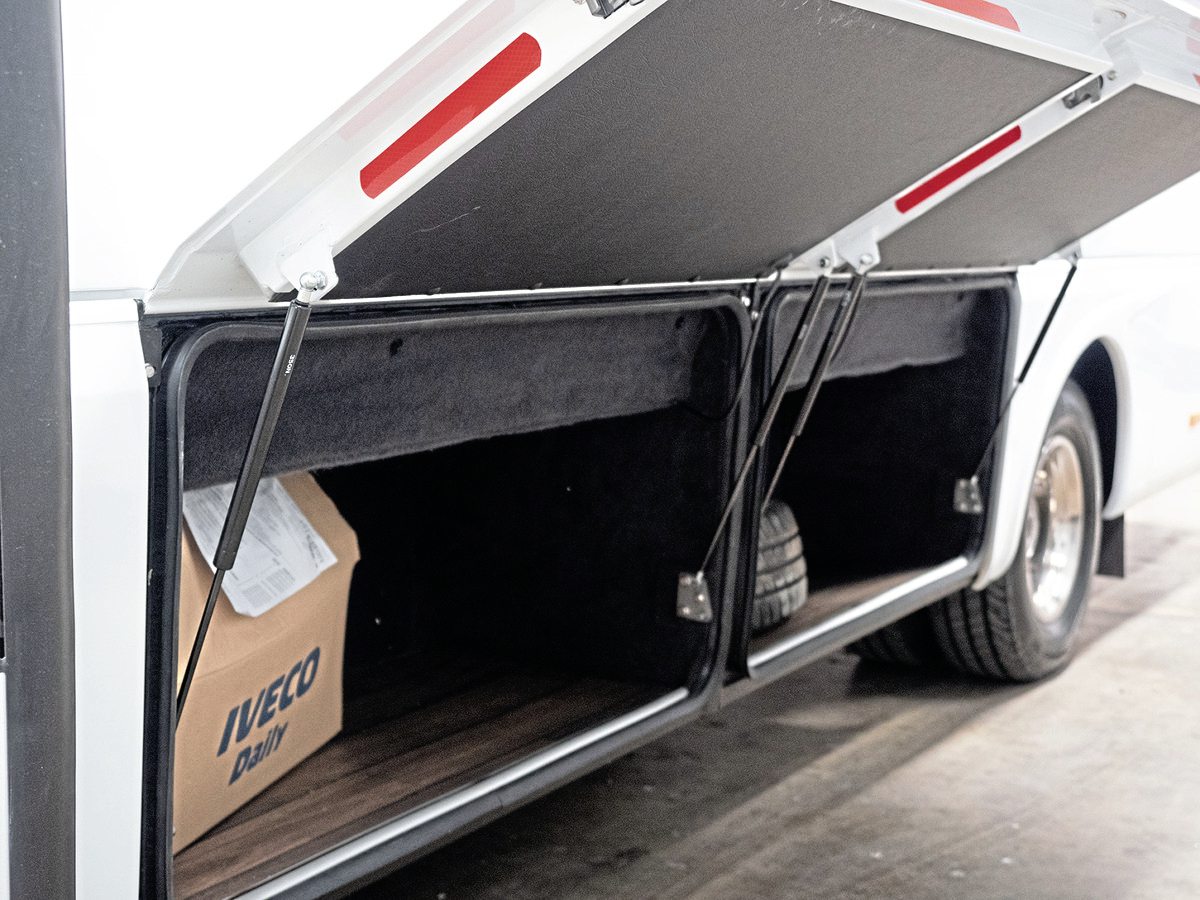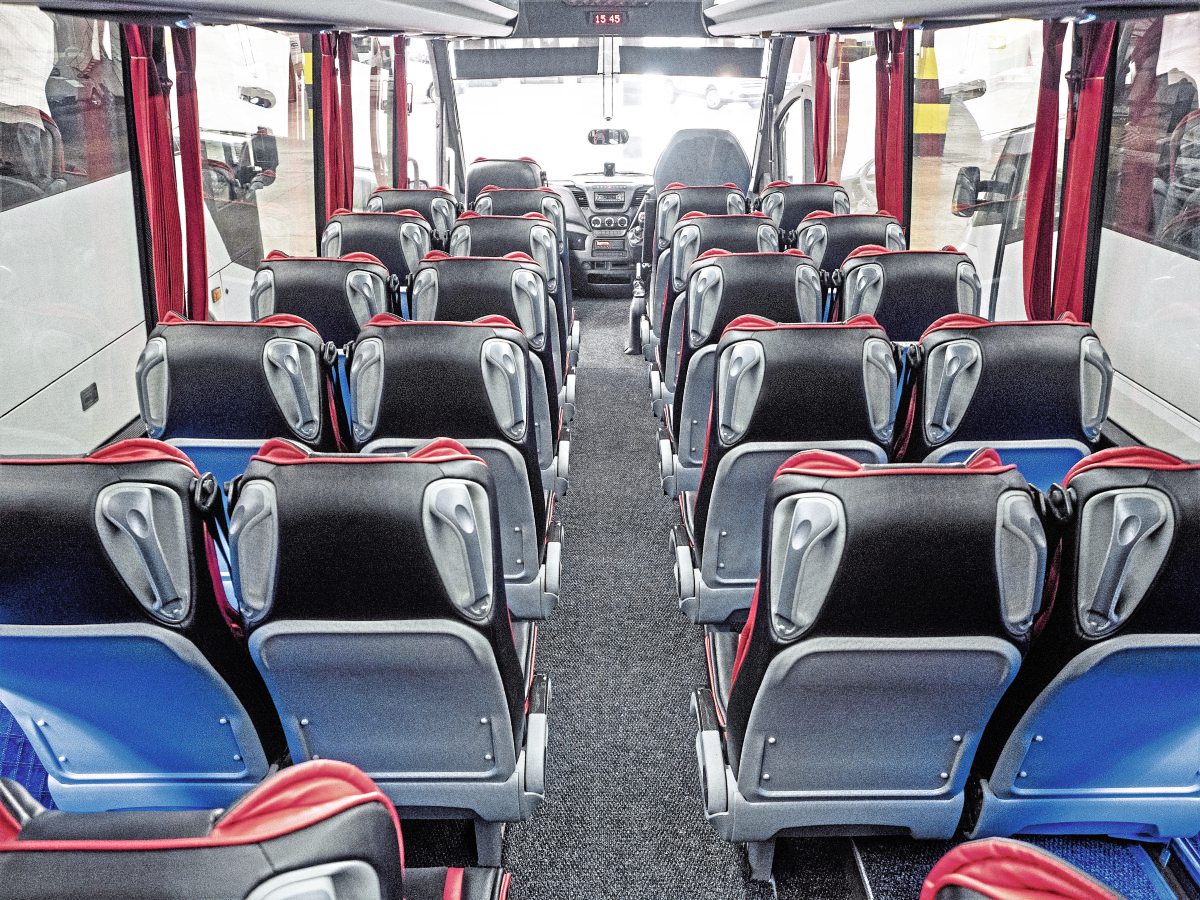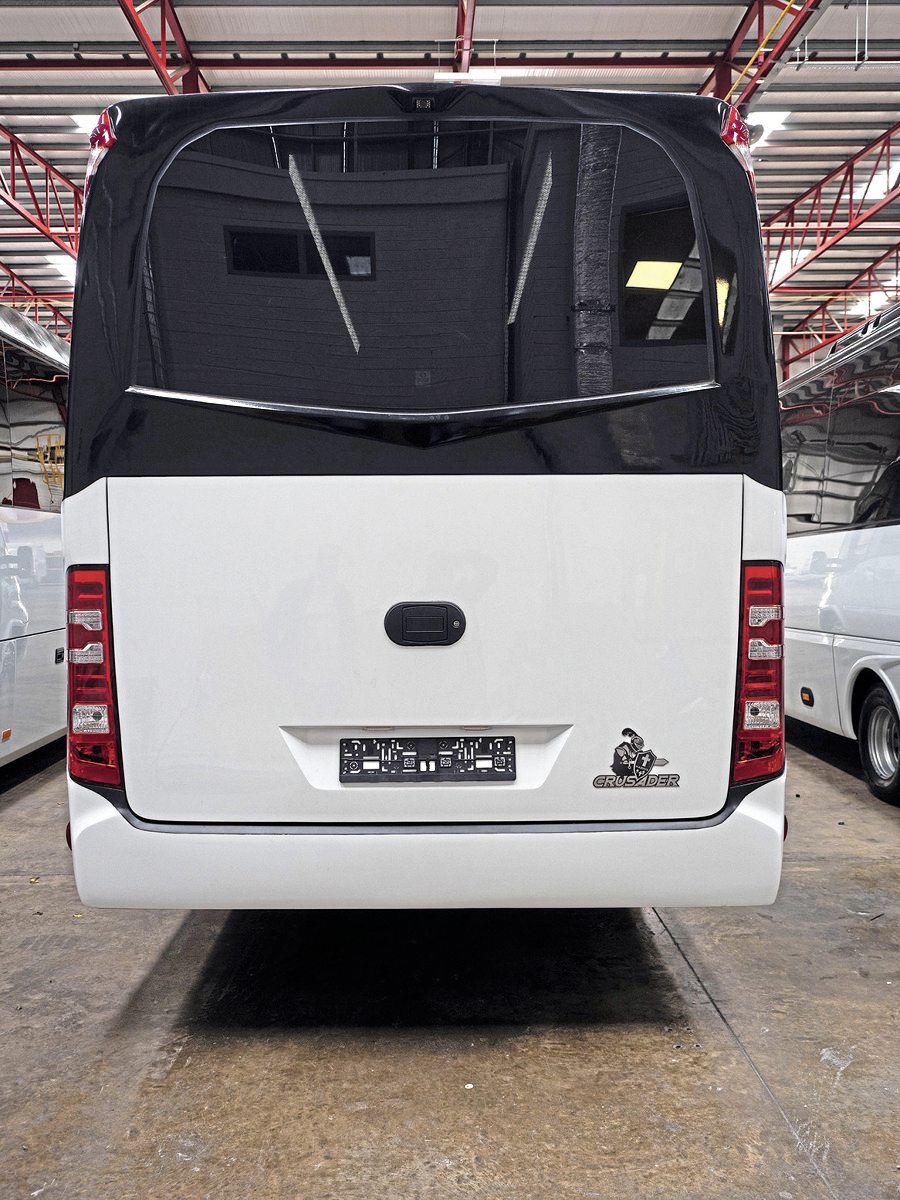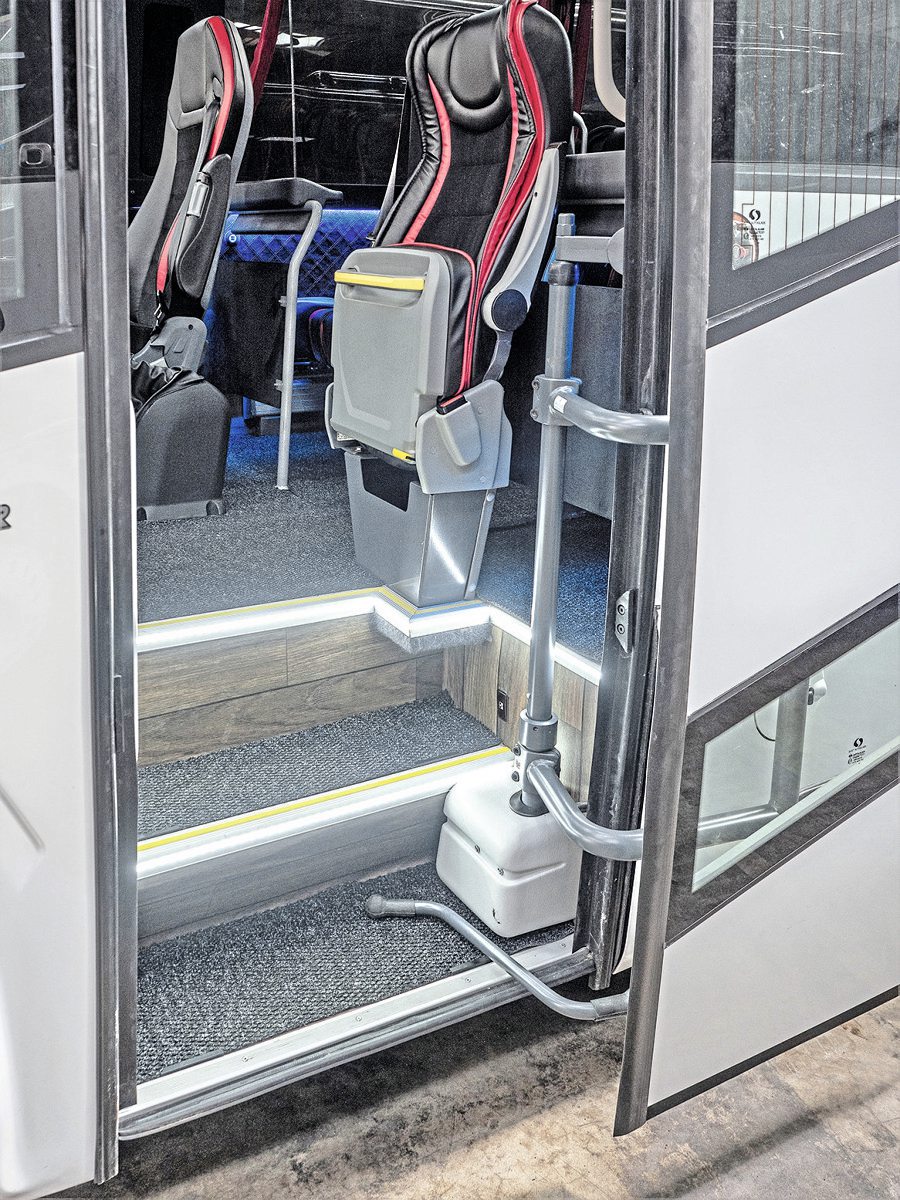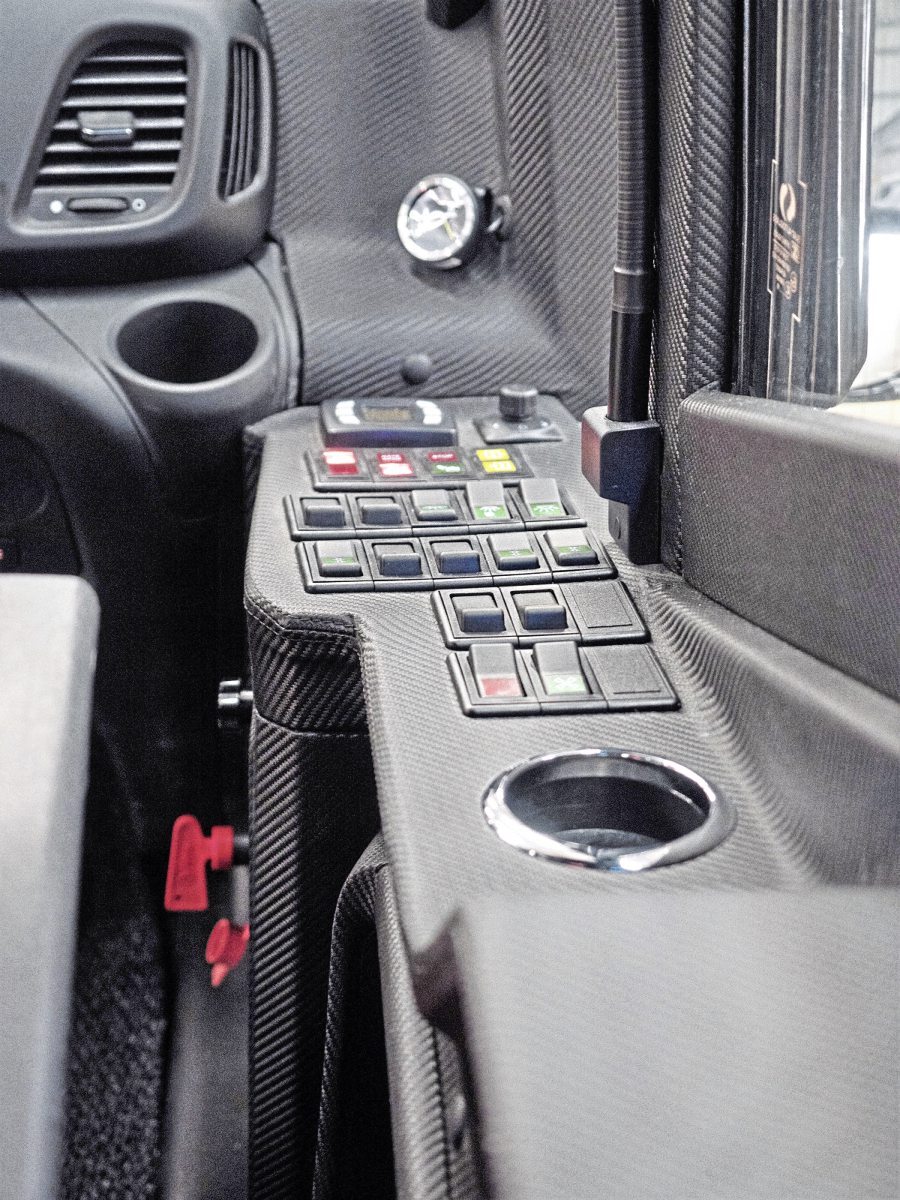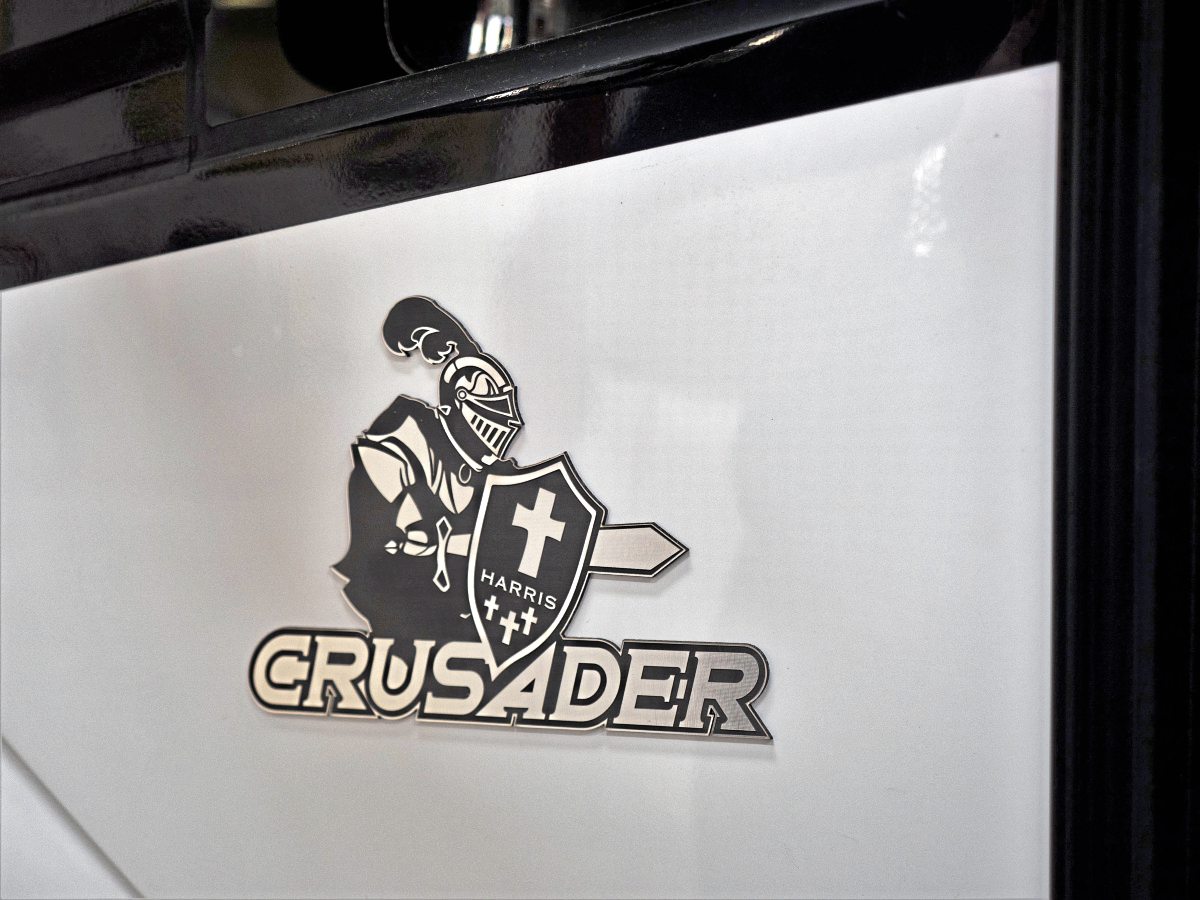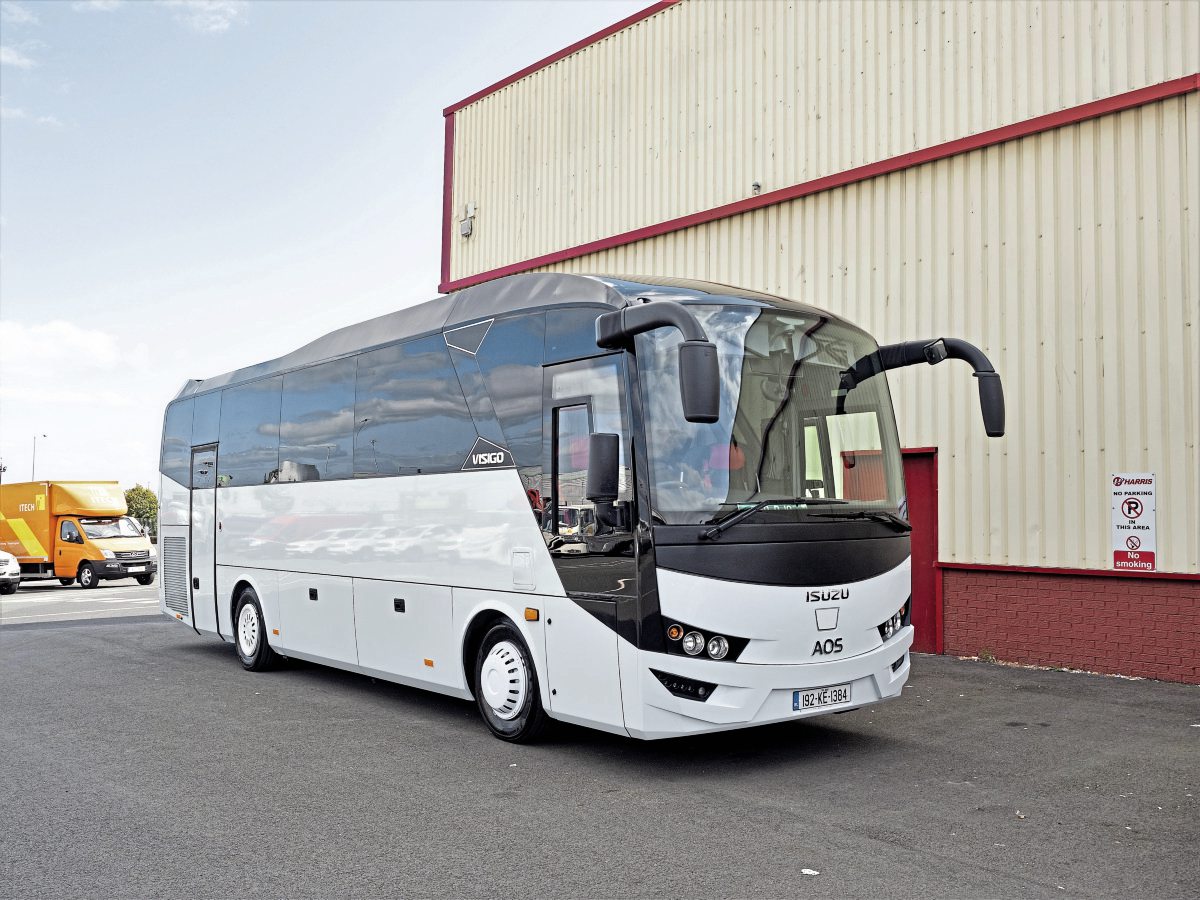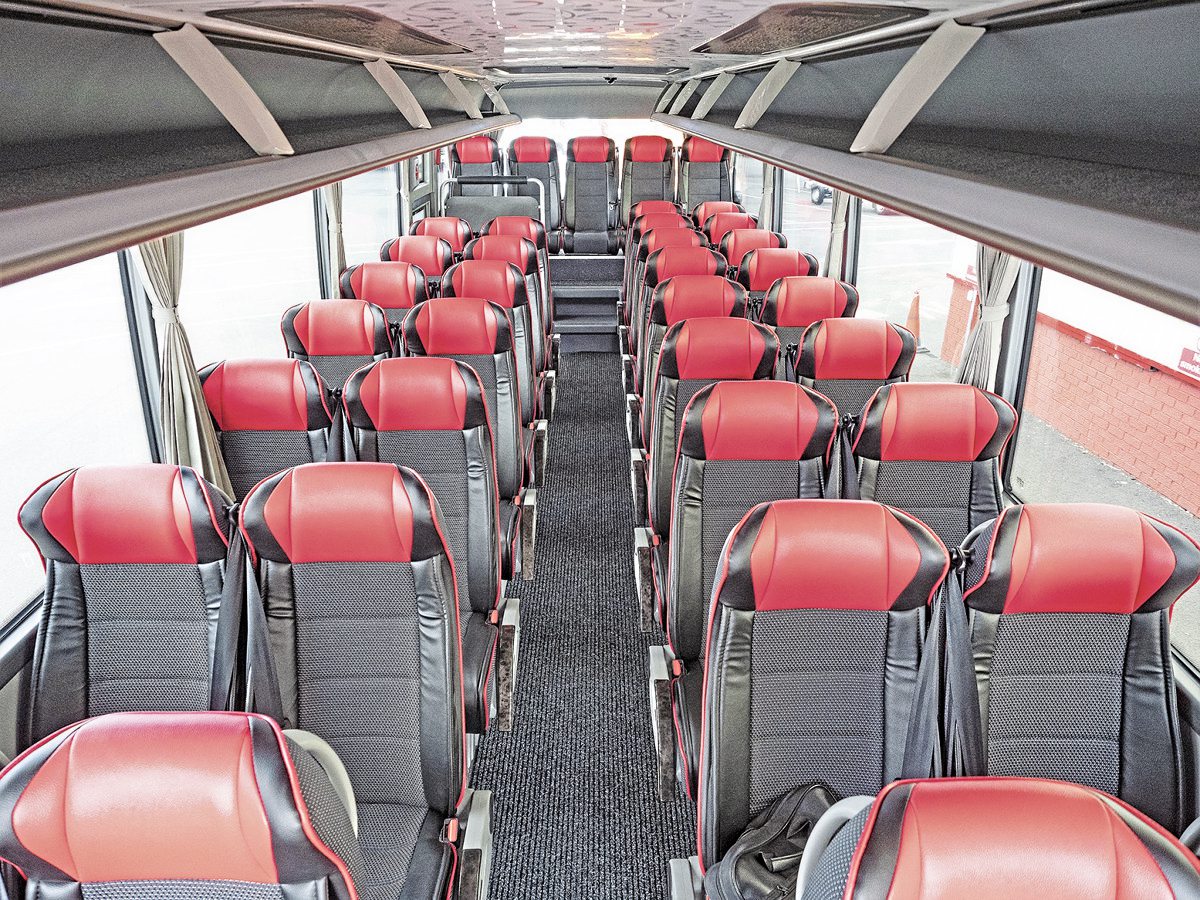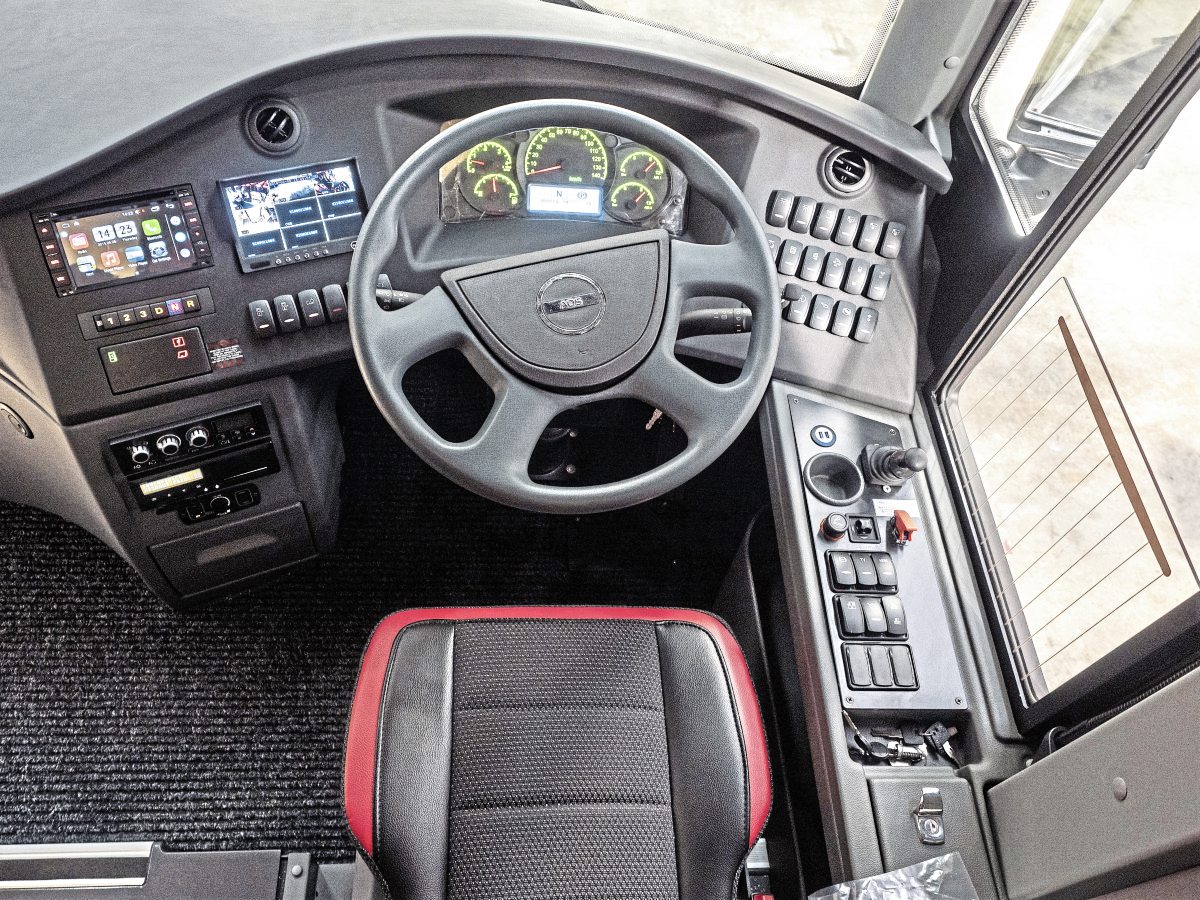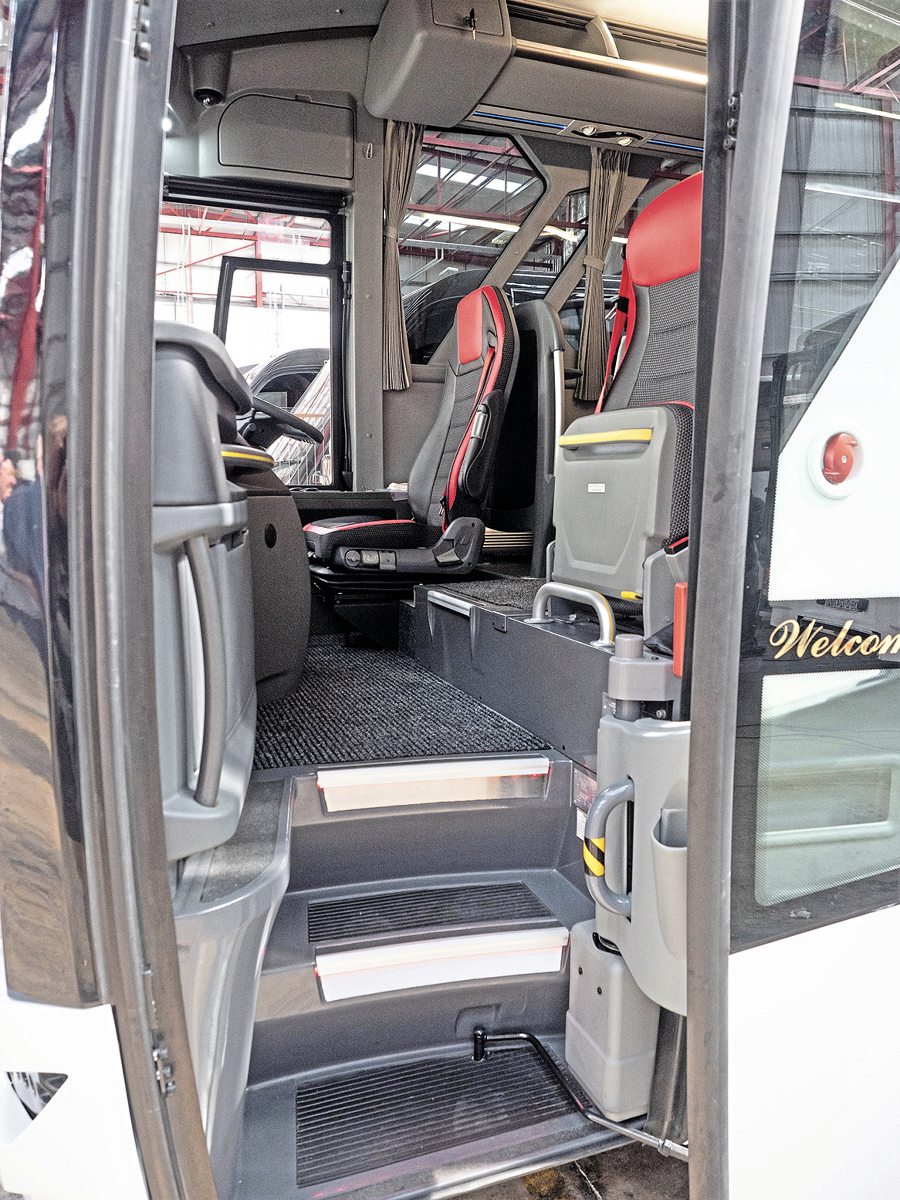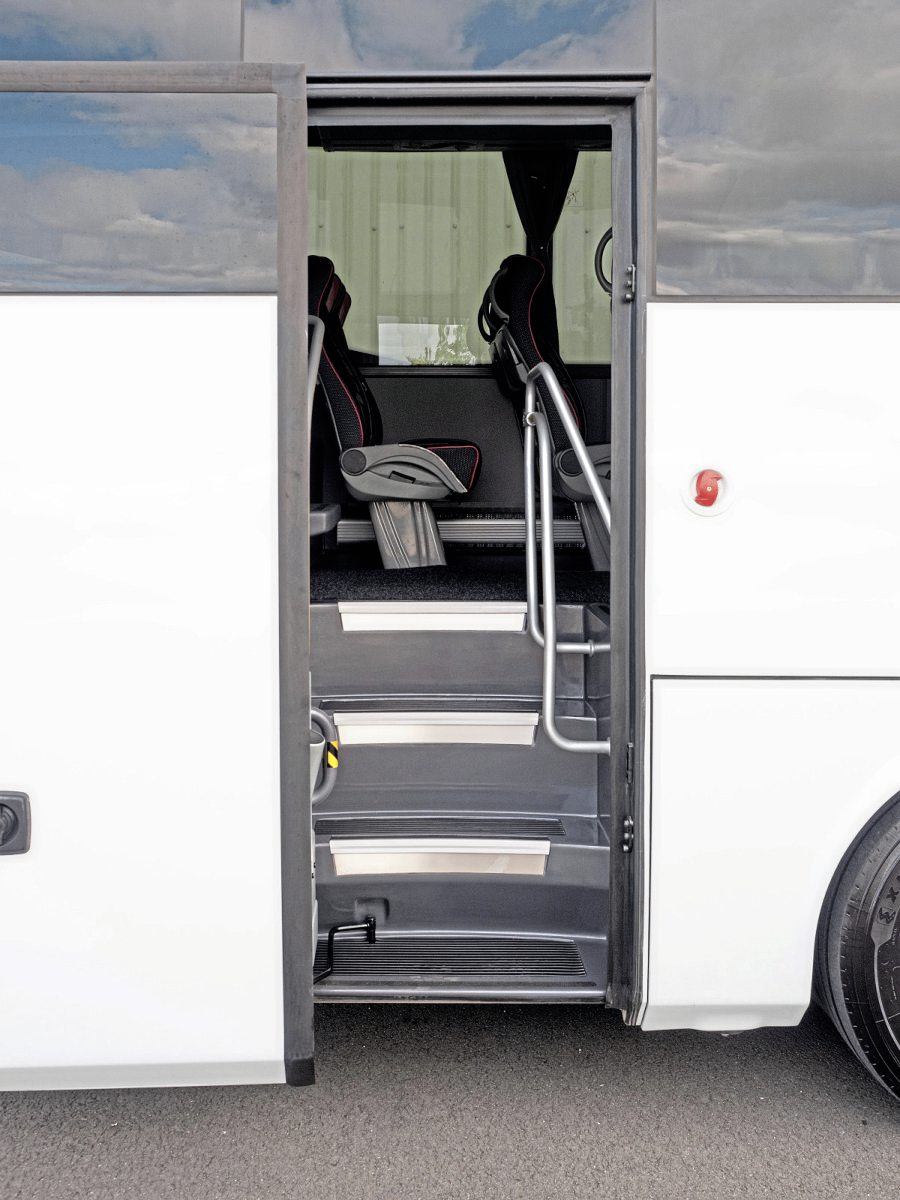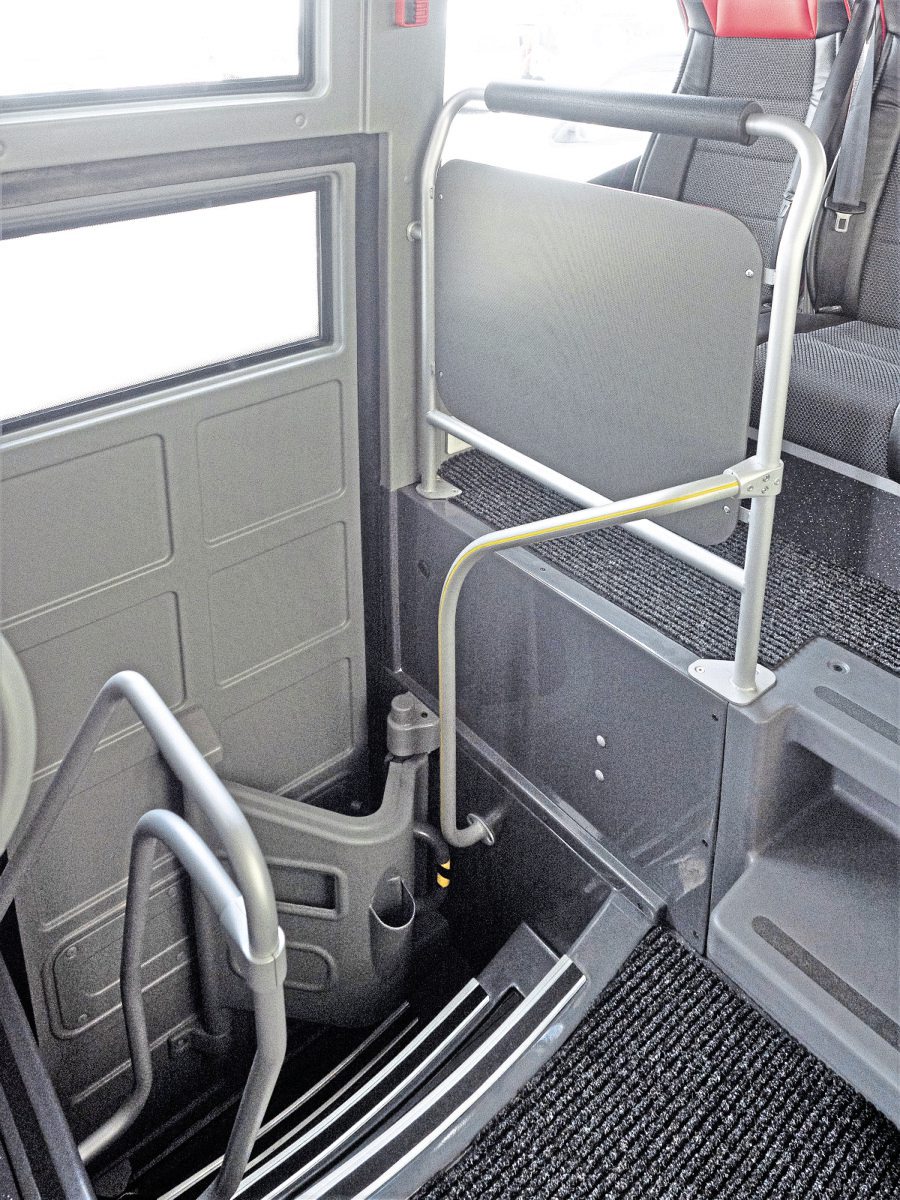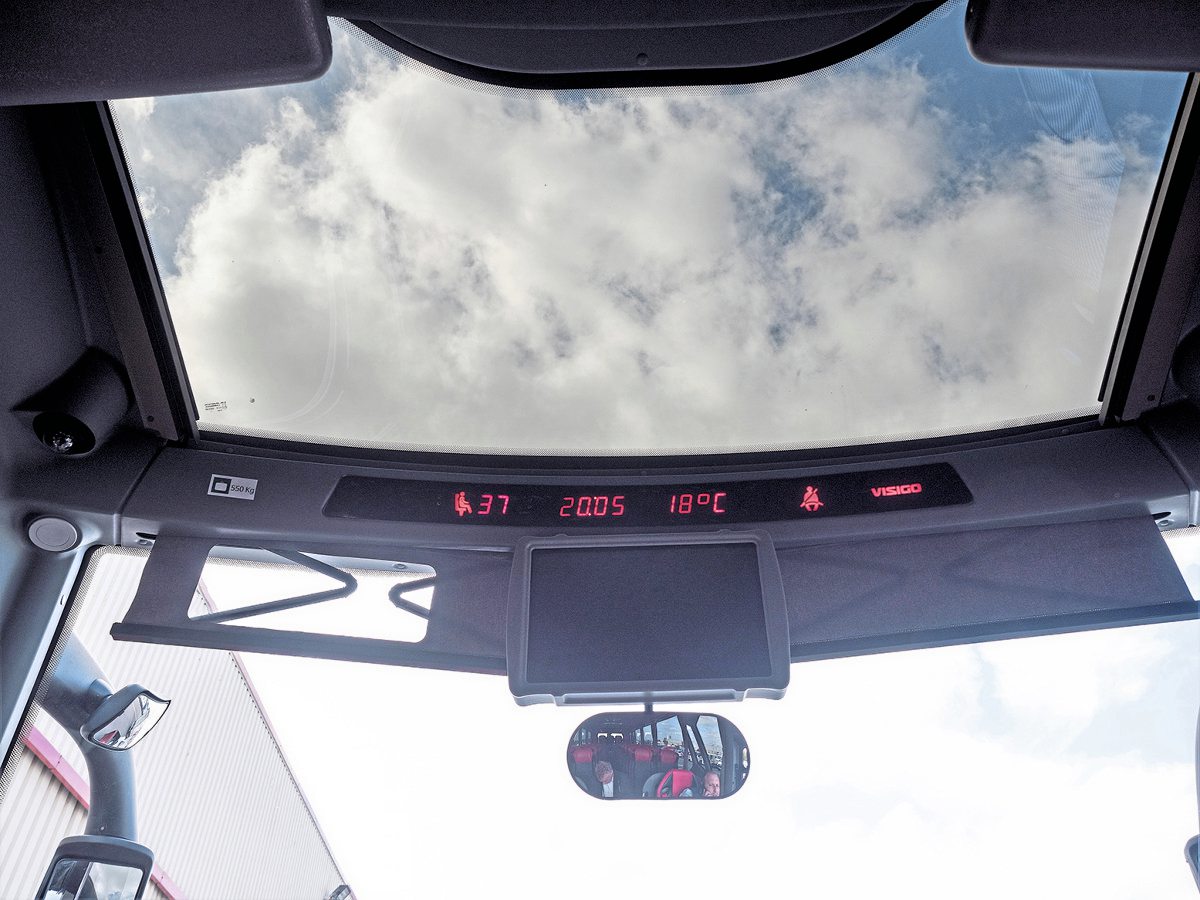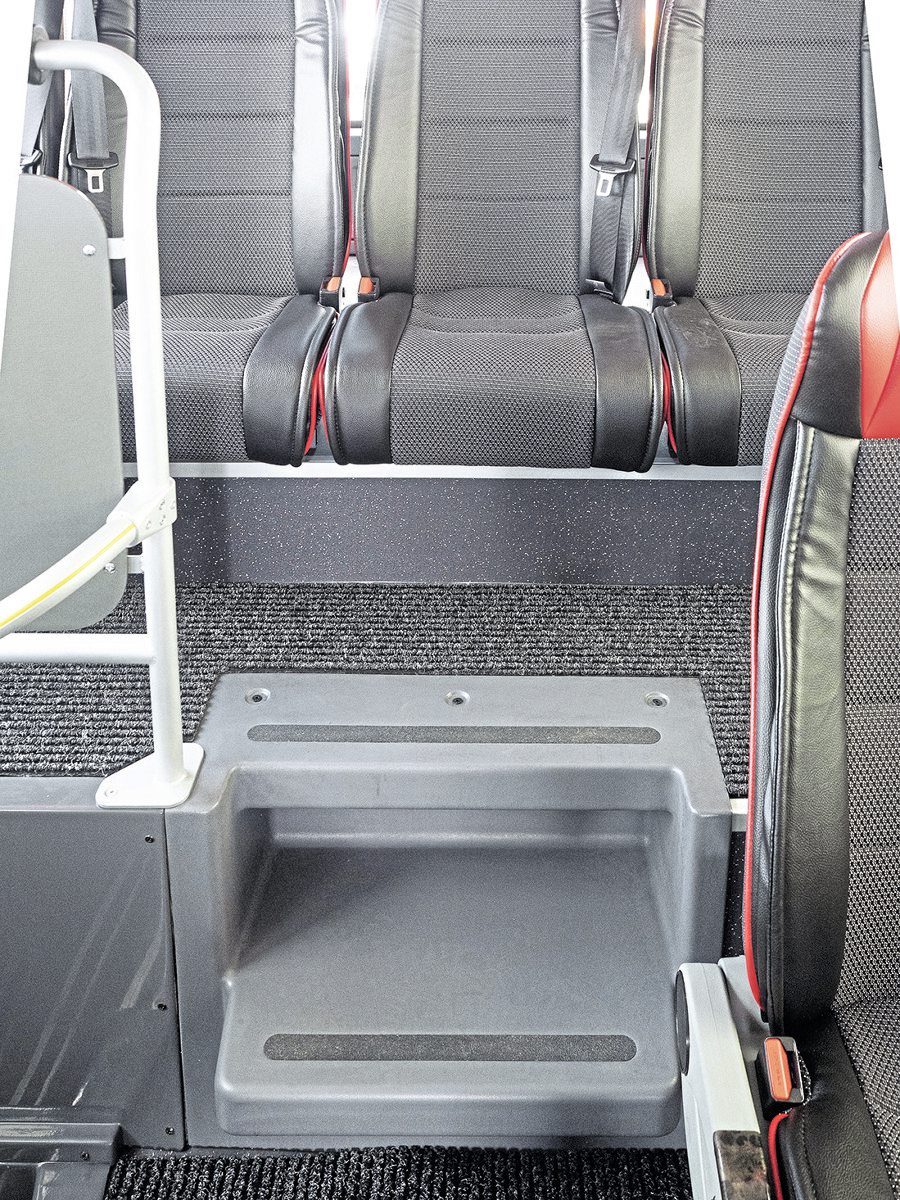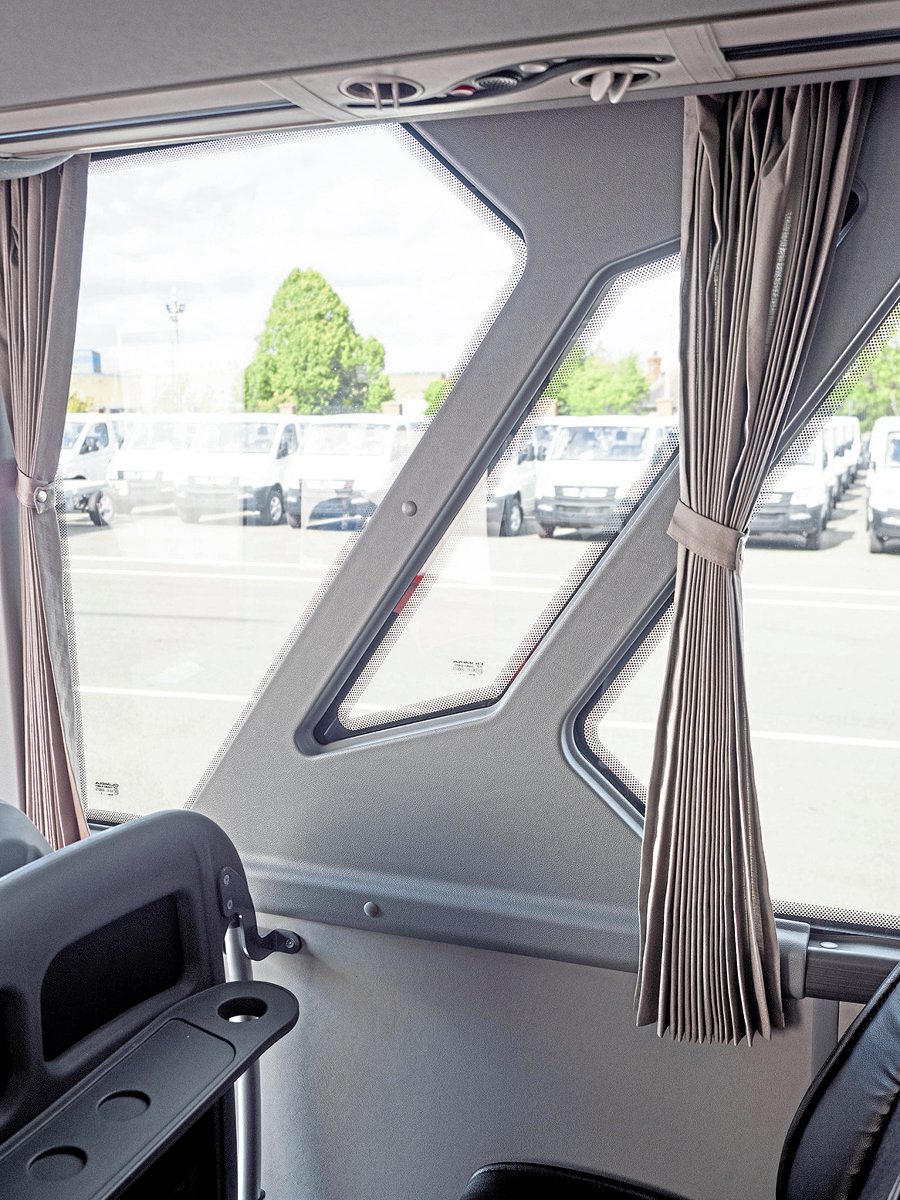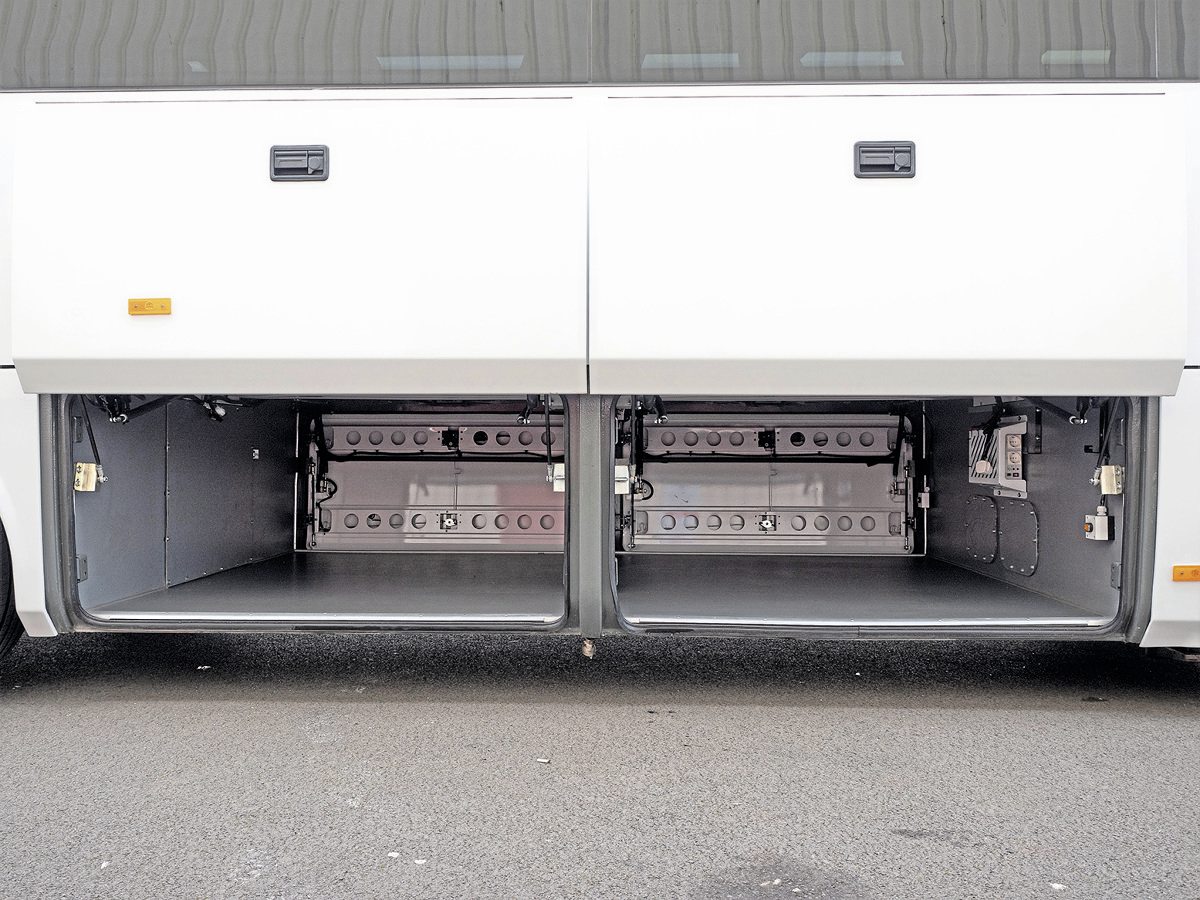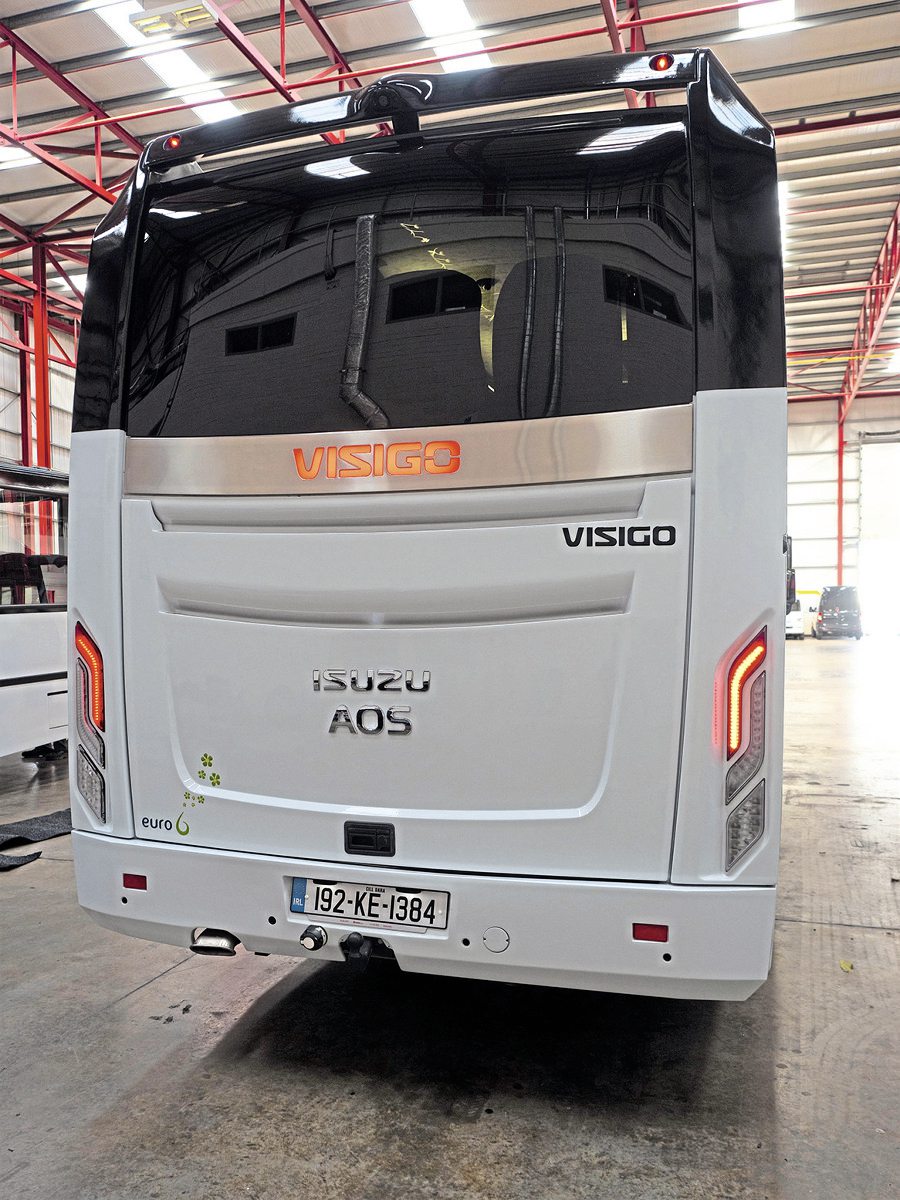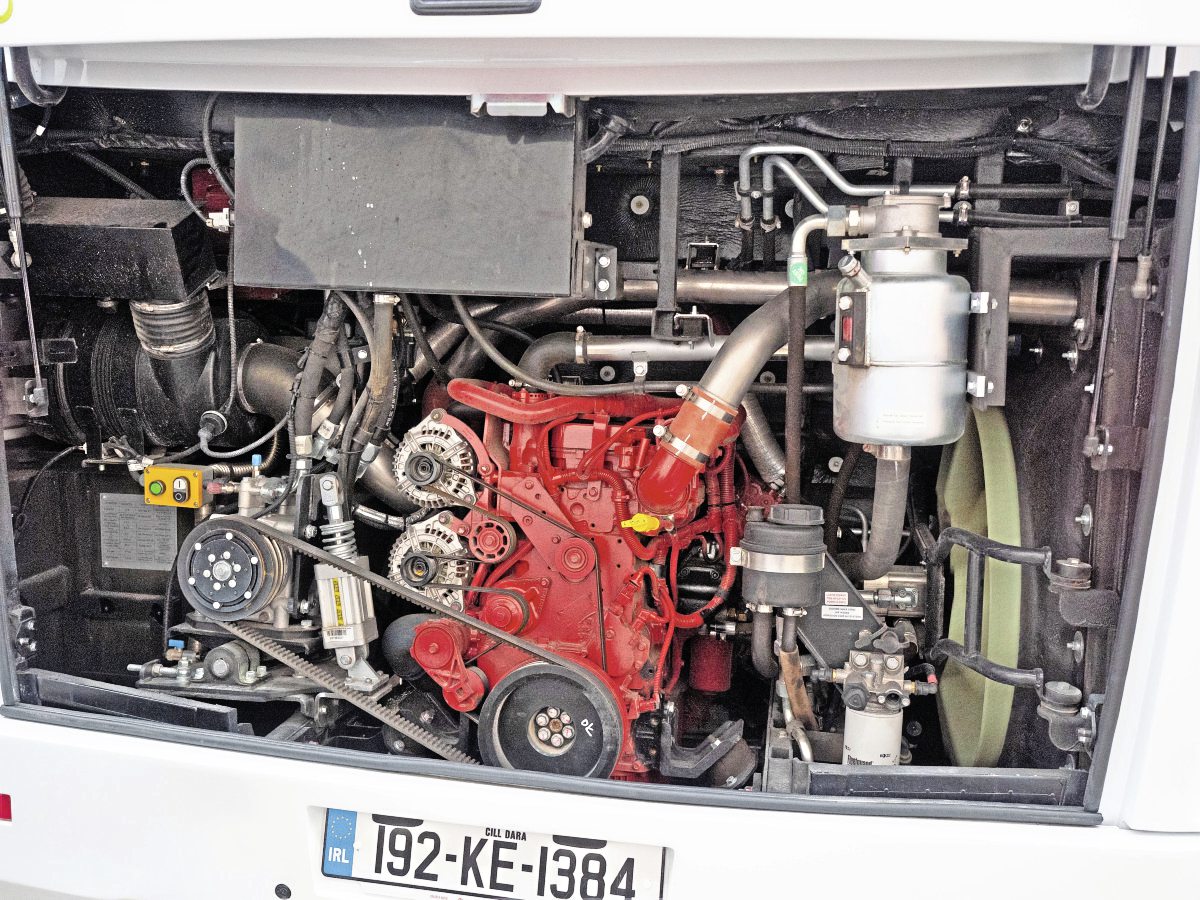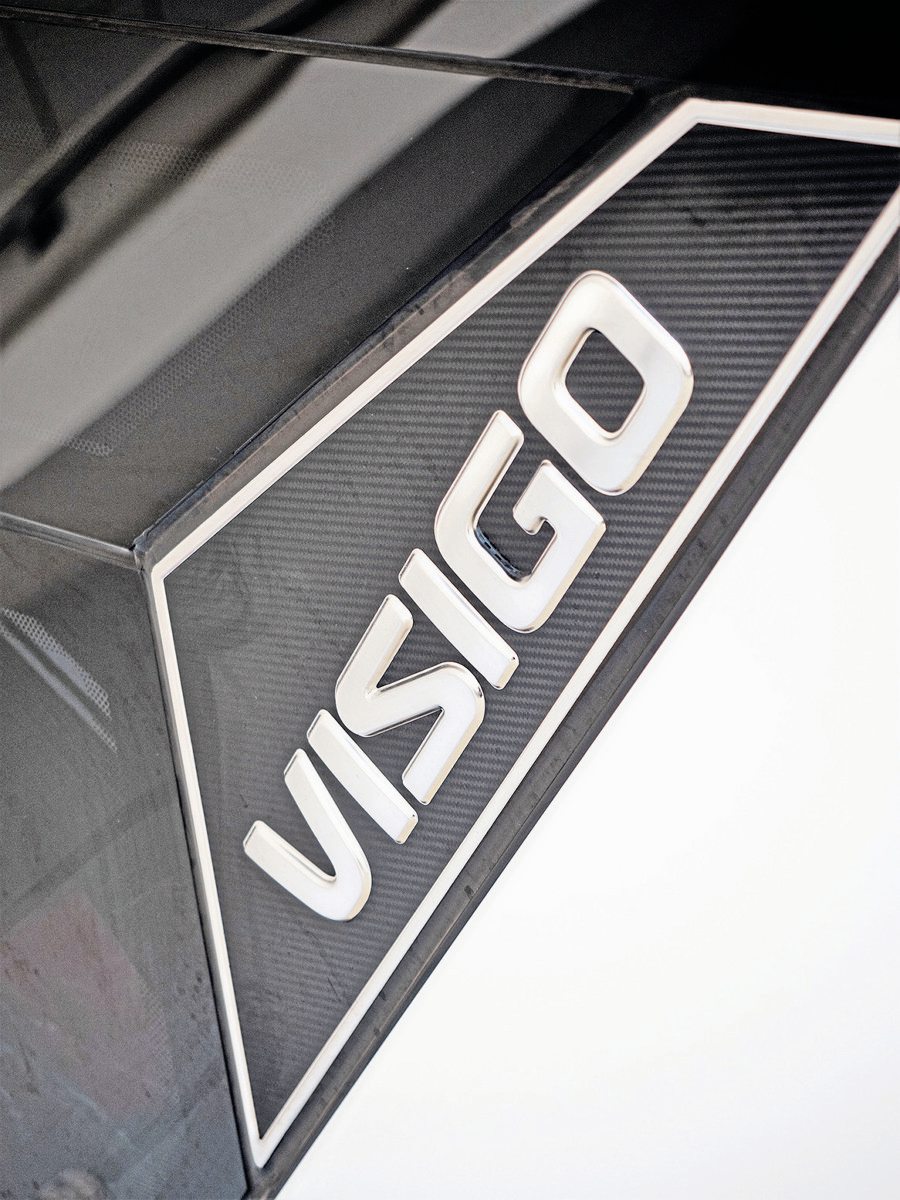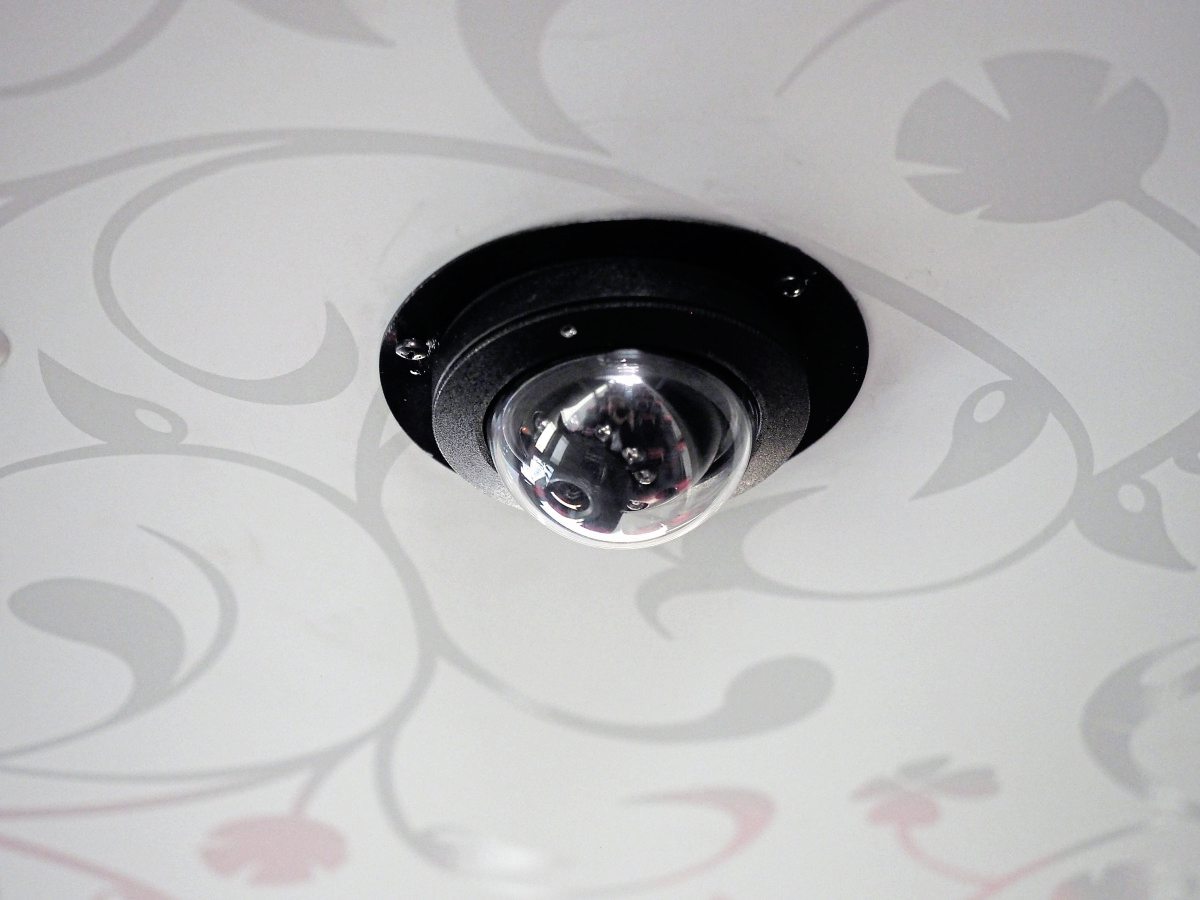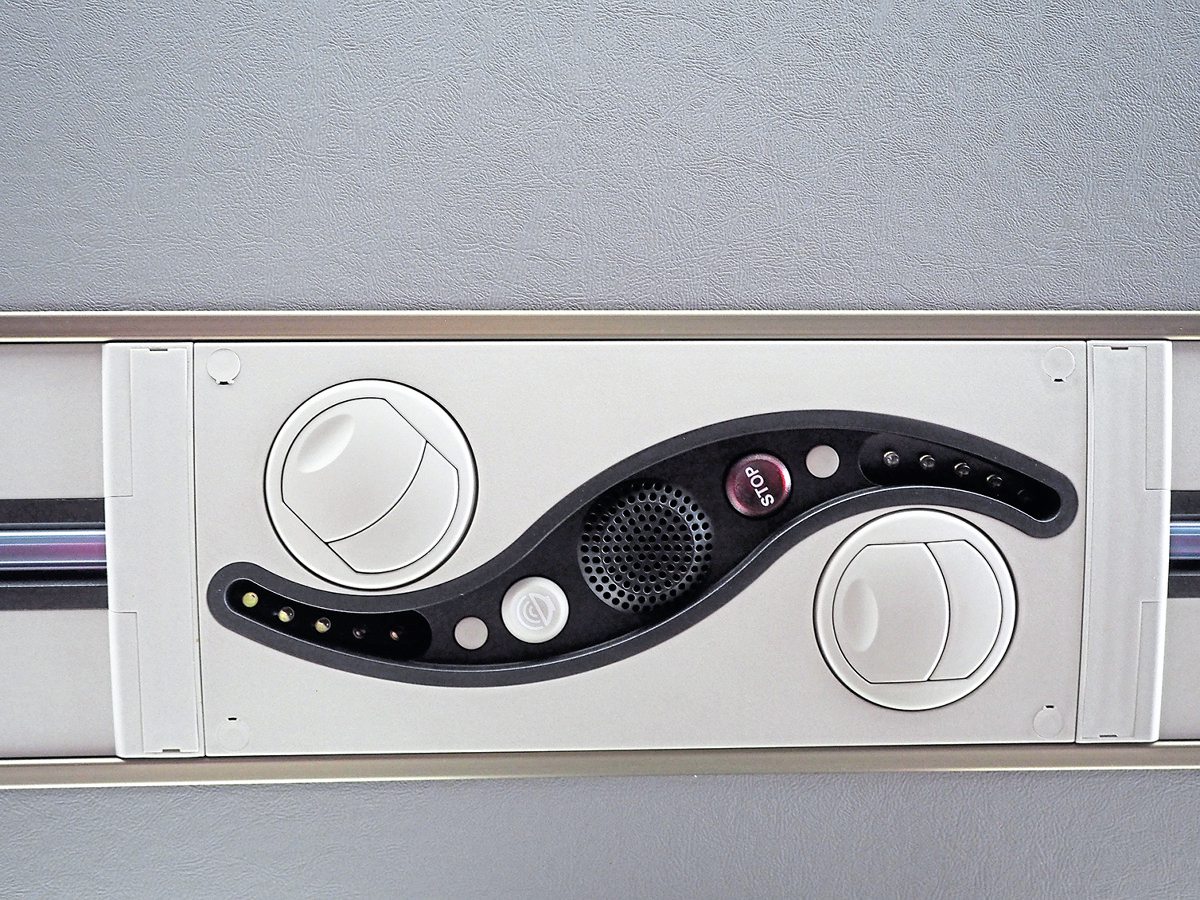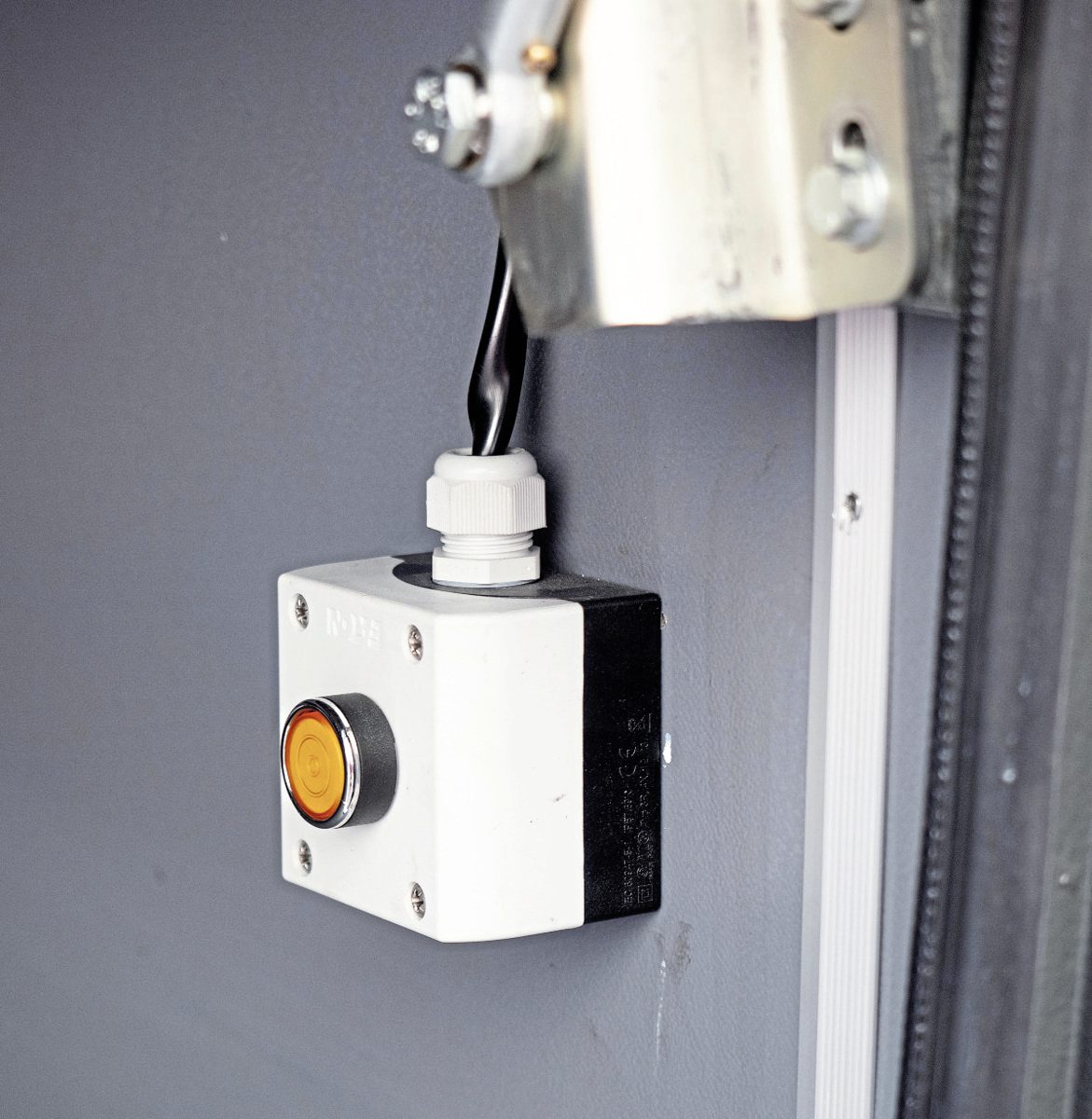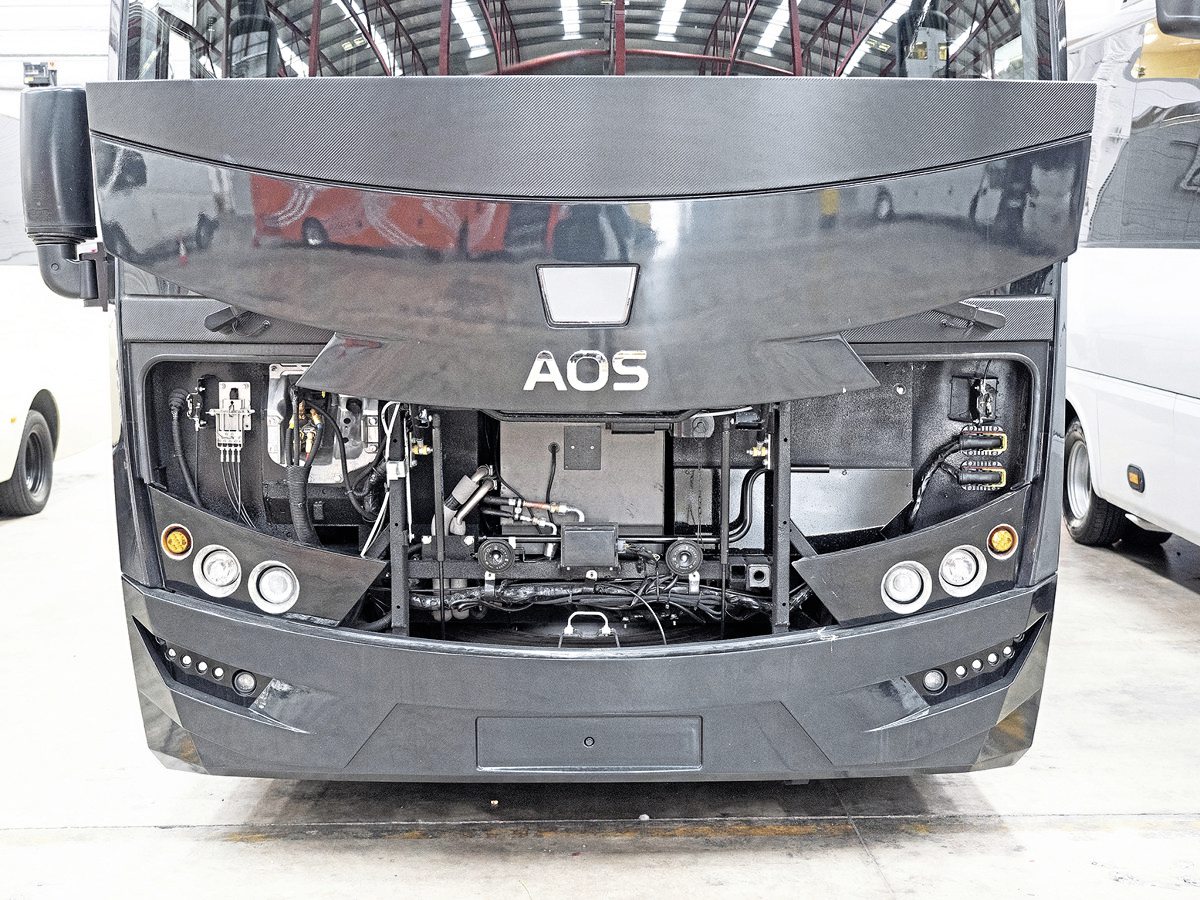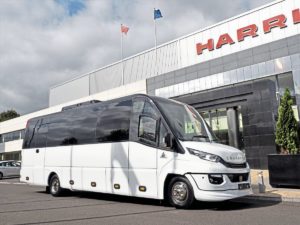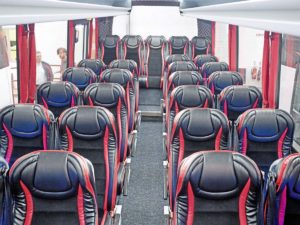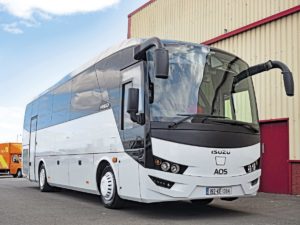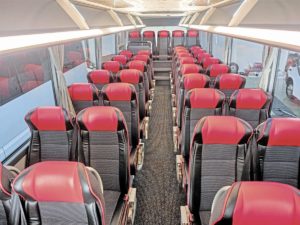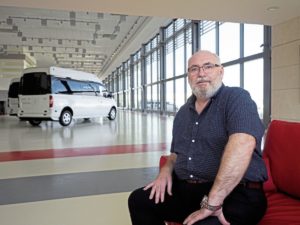Harris hits top gear
A new midicoach and upgrades for its two existing midicoaches – plus a huge, new site for its business – has put Irish importer Harris in the frame of mind to target new UK coach sales with a range of options. Bus and Coach Buyer went over for a look
Click the image above to access our gallery of photos
Dublin-based Harris Commercials is tilting for the midicoach sector, with a new vehicle, development of its Isuzu AOS Visigo and a re-engineered Higer Super 9.
A dominant player in the Irish truck market for many years, Harris has moved into a new development sporting a new coach and bus showroom, offices and huge, new parts facility. Harris will now support three main coach products, with more on the way.
The new product is the Crusader – a 33-seat coachbuilt based on the Iveco 70C18 chassis cowl – with the 37-seat Isuzu AOS Visigo also Turkish-built but with familiar driveline and components.
Crusader
The Crusader midicoach rides aboard the increasing popularity of the Iveco base, with its ZF-derived automatic gearbox and quiet, powerful Iveco engine. It enters a popular sector, with similar product in the UK.
Crusader for Harris is produced in Turkey, creating a 33-seater with luggage lockers and a boot. The seats are all on tracking, so it can be reconfigured for low cost. Indeed, the rear row of seats and boot partition can also be moved forward, losing two seats but gaining boot space.
Harris has selected Sege seats, in the first examples a half-leather option with velour centre panel, all with three-point belts. The seat can be side-shifted into the fairly generous aisle. The standard of finish is good, with an interesting diamond-stitched headlining complementing the seats.
The Crusader has full-length luggage racks which feature a finger-hold edge and mood lighting LEDs. There are passenger service units at each seat position with ventilation louvres, reading lights and courier call.
The coach has a flat floor which is finished with wood-effect vinyl and carpeted. Harris is now working with the supplier to evolve a wheelchair-accessible version to meet PSVAR; potentially, the Crusader could take as many as eight wheelchairs.
At the rear, the Crusader has a ‘jump’ emergency door, while it also has glazed hatches in the roof. Centre of the roof is an independent Webasto climate control unit.
Sensibly, the coachbuilder has retained much of the Iveco cowl, so access to the engine bay for servicing will not be compromised. There’s a finishing touch of a lower valance moulding to give the coach a more striking appearance.
The driver seats is a suspended item, and the driver door is, of course, deleted, with a neat carbon-effect control panel for additional switchgear fitted to the right. This moulding also incorporates a document cubby hole. The view from the driver seat is excllent. The Crusader retains the waist-level Iveco mirrors, which are electrically adjusted and heated. The sunblind is a two-part, electrical item.
The electric plug door has a lower pane to better see the kerb distance. It opens to reveal a three-step entrance and a tip-up courier seat. The launch vehicle currently has two decency screens. The offside decency screen is to be deleted to better seat pitch in the offside seat row, while the nearside screen may be abbreviated, too, for the main UK production run.
The dash fridge is standard, and there’s a useful document locker. Above the dash the Crusader has a clock and drop-down monitor screen. Harris says its priority has been to create a midicoach equipped as standard with all the operator needs, although it is happy to customise vehicles with sufficient lead time.
AOS Visigo
Although launched at last year’s Euro Bus Expo as an alternative to the Chinese-built Higer Super 9, the Turkish-built Isuzu AOS Visigo has now been modified to take into account operator responses.
At 37 seats plus driver and courier in the test example, it provides a counterpoint for other rear-engined midicoaches, such as Yutong’s TC9.
Like the Yutong, it is narrower than a full-size coach, not only making it useful for visits to historic cities and attractions, but achieving great proportions which are visually appealing.
The driveline will be a major attraction, with the Darlington-built Cummins ISB 6.7-litre engine producing 320bhp, and ZF’s popular EcoLife automatic gearbox. Higer’s Super 9 shares this driveline.
It’s a smart, powerful coach with some neat touches, the most obvious, and quirky, being a ‘sunroof’ positioned over the entrance and driver. This glazed panel not only offers a nice glimpse of the sky but on a practical level, delivers great light into the stairwell. There’s an electrically-operated blind which can be used to cover it when not needed.
Harris has gone for high specification with this midicoach. It has every conceivable extra including powered locker doors – accessing an impressive 5.5m3 of luggage space – which themselves have another trick up their sleeve; a button inside the lockers uses the air suspension to raise the vehicle a few more inches, helping the driver reach the suitcases.
The styling of the AOS Visigo sets it apart from competitors. The diamond window lights positioned in the B pillar and the contoured roof give it a striking appearance. At the rear, it has a louvred engine bay cover and above this, a brushed stainless effect panel with the Visigo moniker proudly lit in red. The coach will have a tow hitch as standard, allaying any fears about luggage capacity particularly if the operator chooses the 39-seat option.
Although most of the mouldings are GRP, aluminium has been used in the wheelarches, to prevent corrosion, and for the doors. The front panel lifts to reveal all serviceable components.
The attention to detail in this revisited design includes driver-replaceable auxiliary belts, effected by sending air to the hinged mount for the compressor, which then tilts to un-tension the belt for removal or replacement.
Other revisions have included air tanks which can be filled from an air line, and a change in position for a number of components to make maintenance much easier than on the left-hand drive version presented last year. The fuse board has an LED system which lights to show which fuse is suspect.
The plug door opens to reveal a four-step entrance; the first three to the driver level and another into the saloon. There’s a hand rail to the left and courier seat to the right.
The driver cab is nicely designed to wrap around the seating position, making everything easy to reach. The main, central speedometer binnacle is easily visible through the steering wheel, and switchgear logically laid out. We should mention at this point that the Visigo has an eight-camera CCTV system with recording as standard. The coach comes equipped with a high-end audio/PA system plus monitor.
Drive is engaged, as with all EcoLife gearboxes, with push buttons. In addition to standard modes, the coach has Eco and Sport modes among its four selectable set-ups. In general, the dashboard exhibits excellent ergonomics, the gearshift and handbrake having been moved since operators saw the show vehicle last year.
Within the saloon, the Visigo is attractive, with Sege seating, full-length luggage racks with passenger service units. Heating is via floor-mounted convectors and cooling via a powerful 24kW automatic climate control system. Again, this is a flat-floor coach which can be configured easily for a toilet or for VIP use.
Aisle width is good, despite the 2.45m external width of the coach. Seat pitches on the test example were more than adequate. Each double seat has USB sockets mounted between them, below the seat squab, and the seats are attractive, with magazine nets and a drop-down table with cup holder which also has a slot for tablets and smartphones. The seatback tables fold to horizontal with a click. If excess downwards pressure is applied, they fold down further without becoming damaged. The upper seat backs have grab handles and bag hook.
At the rear offside, the Visigo has a large and purposeful continental door ahead of the rear row of five seats. These seats are on a high plinth, accessed by two steps. The result is that rear passengers (perhaps teachers!) have a fantastic view forward. To the left of the rear seat row, there’s a three-pin UK mains plug, supplied by the inverter in the luggage area.
The overall internal finish is excellent. The test example had an unusual rooflining of textured panelling which, on a practical level, would not be a trap for smells and very easy to clean. Air conditioning louvres are positioned just inboard of the luggage racks.
The luggage racks carry very attractive passenger service units. At the front end of each rack, there is lockable storage which had been used, on the offside, for the first aid kit.
Verdict
We had a ride out from the factory aboard the Crusader and the AOS Visigo, and both proved to be rattle-free vehicles, clearly well assembled. The Crusader’s underpinnings are familiar to us. Iveco has, we believe, a winning chassis cowl in the 70C18 and coachbuilders clearly agree. It has a very quiet driveline and impeccable manners.
The appeal of the outward appearance of the Crusader – or, indeed, any front-engined coachbuilt – is subjective. The bonnet projection does delineate it from a ‘proper’ coach but inside, the Crusader is very much a coach, with all the cues which soon make you forget you are in what is, in effect, a converted light truck.
The headroom is very good and the travelling environment bright and cheerful. The ride is pleasant, and devoid of road noise or transmission noise. The view out is very good. Starting at £113,750 for a 29-seater it’s very good value for money.
The AOS Visigo stole my heart a little. It’s priced at the top end of vehicles in this seating capacity; if you want to save a little money, Harris also has the Super 9. But its build quality and attention to detail will appeal to operators, while its comfort and quirkiness will charm passengers.
I’m a sucker for gadgets, and the ‘sunroof’ at the front is both interesting and practical. It really did help make the experience of climbing aboard not one of stepping into gloom. I know some operators will see this as an unnecessary extra, but then, many styling changes we once saw as unusual are now commonplace.
The passenger ride is worthy of note. With air suspension throughout and independent air suspension at the front, it’s the ‘memoryfoam mattress’ of the midicoach market. It simply scores top marks for ride comfort.
And it’s nimble. The Cummins ISB engine is torquey and works well with the EcoLife gearbox, and yet it’s a reasonably quiet engine. The only noise at the rear was some transmission whine, which was possibly accentuated by the presence of the continental door, but wasn’t obtrusive when the driveline wasn’t under load.
Harris makes much of the lightness of this build, claiming a 9.82 tonne kerbweight, and I suspect this helps make it a brisk performer right up to the 100kph limit.
The midicoach market is burgeoning with choice in the UK. In Ireland, Harris has scored well with the Higer Super 9 which is still gaining sales momentum and is already the top-selling rear-engined minicoach in the country. AOS Visigo is a natural partner in this sector, offering a little bit extra for not a lot more money – it’s £147,750. I can see it gaining acceptance in the UK pretty quickly.
Steady as she goes at Harris
The stunning, new facility on the Naas Road out of Dublin will pretty quickly convince visitors that the company is not only well-financed but sees growth in the coach market as pivotal to its progress.
Marketing and New Product Director, Chris Haughton, would probably be the first to admit that he has been on a steep learning curve since Harris launched the Storm 1 back in 2016 – the coach which became the Super 9. He told me that, while the Super 9 quickly gained acceptance in the Irish market, he stifled additional marketing of the vehicle in the UK until the time was right, and he was sure that the Super 9 had become all he wanted for a UK, Euro VI coach. It included changing the Allison gearbox for the ZF. That time, he said, is now.
The AOS and Crusader give Harris Group customers a great choice to match any budget, but the company is far from finished with its growth spurt. On its way to the UK is a 12-metre Higer, the Pegasus, which will offer 55 seats and 9.5m3 of luggage space in a 3.5-metre-high touring coach, again with a Darlington-built Cummins engine and ZF EcoLife at its heart.
Haughton is buzzing with other ideas, too, many of which will be announced at Coach and Bus UK in October. In another company, this would be a worrying sign, as more models means more need for aftermarket care and parts stock.
Until, that is, you have seen the enormous Harris site in Dublin, with a parts stock stored in a building which is the best part of two acres; there are literally millions of parts, covering Harris truck market (it once controlled 60% of all commercial vehicles in Ireland) but reserving huge space for racks of spares for all of the coaches it is now selling: “I could build two more coaches with what’s in here,” Chris said, as we surveyed towers of parts accessible only by a computer-controlled cherry-picker. Harris is deadly serious about product support.
“If a UK customer has problems, we’ll fly the parts to them from here if we have to. Our philosophy is to get the vehicle back on the road first, no matter what the problem.”
The showroom is equally impressive, and we took a little time to line up the three current products in it for a photo. Behind us were two Euro Coach converted LDV minibuses, including a sub-4-tonne 18-seater, at around £32,500, and a VIP ten-seater with luggage at £36,975 with a five-year warranty. Very quietly, Harris has been doing nicely with the LDV range, selling into the Irish Post Office among other corporate customers.
I’ll keep Chris’s powder dry in terms of the NEC show this year, but we suspect that the Harris Group stand will be the subject of much of the show’s chatter.
